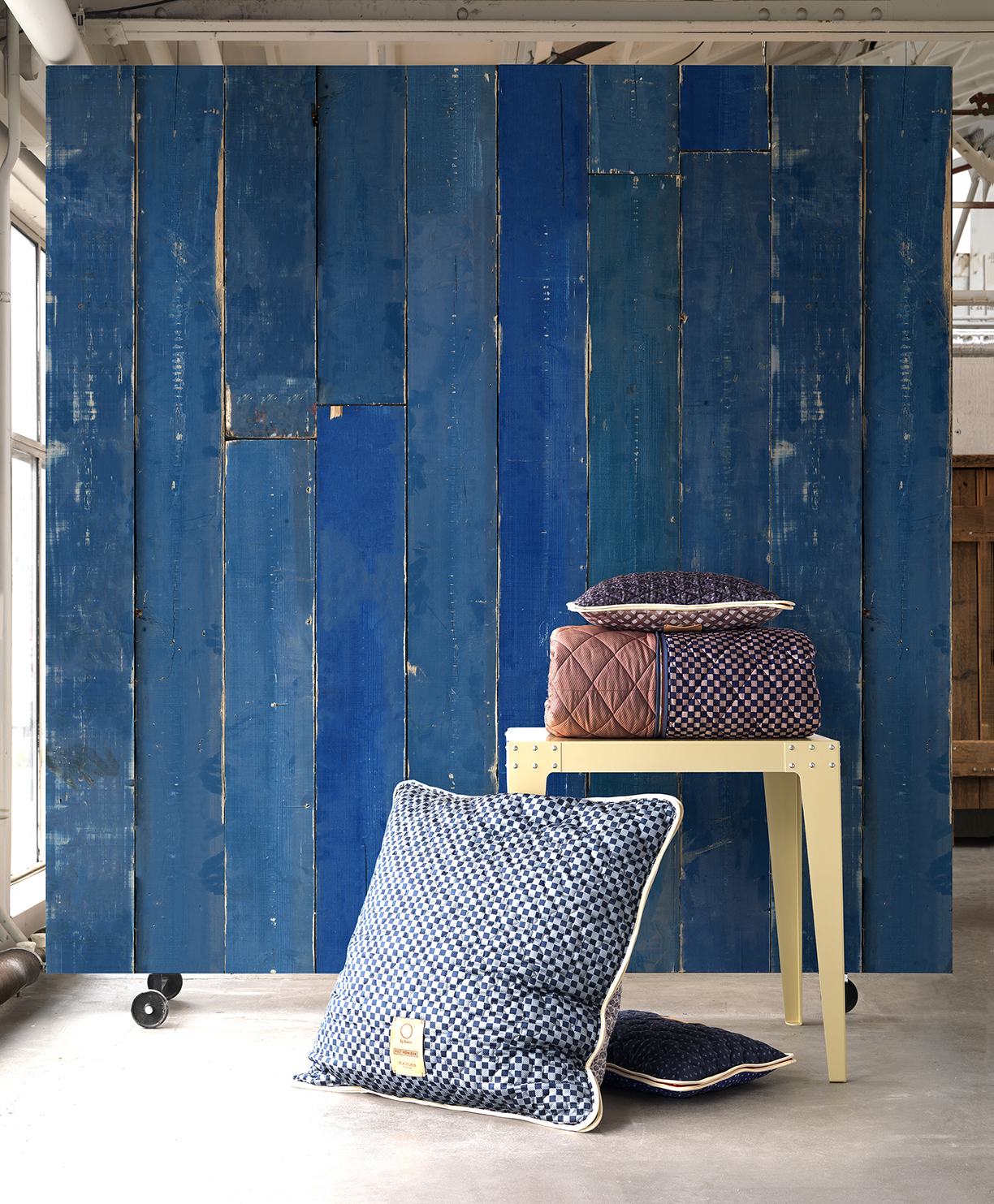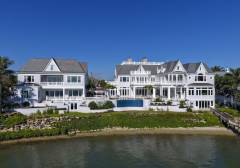All photos courtesy Vanleles Diamonds.
Vanleles Diamonds — focused on producing jewelry sourced from ethical mining — is the first-ever female-owned African fine jewelry brand.
Living and working all around the world has allowed Vania Leles to develop an edge in her work, drawing from her experiences to shape Vanleles Diamonds into a global luxury brand. “Growing up, I studied in between Guinea-Bissau and Portugal, returning to Africa during breaks to travel around the continent with my family,” Leles says. “Upon graduating from NOVA University Lisbon, I moved to London to learn English and became a social worker. I changed careers after being discovered by a modeling scout, and lived and worked as a model in Paris and New York for a few years.”
Leles’ ties to her African heritage are evident in her designs. “Then came that fateful day when I decided to join the jewelry world,” Leles says. “All these events and influences are reflected in details of the Vanleles collection. Some people expect my jewelry to be tribal or ethnic, but it is a combination of my memories of Africa and my experiences traveling throughout the world and living in Europe.”
Leles is no stranger to the world of luxury. While working as a model, she was inspired by the fine jewelry on set, and connected this to her home in Africa. “Around 2003, I was modeling on a shoot with fine jewelry when someone on the set told me that all precious and many semiprecious stones can be found in Africa,” Leles explains. “Intrigued, as I am from the West African nation of Guinea-Bissau, I did some research. I discovered that at that time, there were no African haute-jewelry designers working with these materials native to their continents.”
With this in mind, Leles set out to begin her own company. “This was enough for me to decide that I would establish the world’s first female-founded African high jewelry house,” Leles says.
Leles’ breakout into the world of jewelry was not immediate. “When I told my mother about my plans, she suggested I get 10 years of experience before launching my own company,” Leles reflects. “This seemed like a long time, but I agreed, quitting modeling and enrolling in classes on gems, design and business at the Gemological Institute of America.”
Leles then traveled to New York City, learning and graduating from the Gemological Institute of America. Heeding her mother’s advice, Leles spent over a decade working and learning from world-renowned fine jewelry brands GRAFF, De Beers and Sotheby’s. To launch the jewelry business she had dreamed about since her modeling days, London’s New Bond Street, the heart of the international fine jewelry world, was a clear-cut choice for the location of Vanleles Diamonds flagship atelier. “I came here over 20 years ago to learn English and never went back.”
Vanleles Diamonds offers a variety of jewelry styles, including rings, earrings, necklaces, and bracelets, each crafted by skilled jewelry makers. Leles explained that her goal is to allow the wearers of her jewelry pieces to feel “empowered, happy, and with a knowledge that we created their jewelry in the most transparent and ethical way possible.”
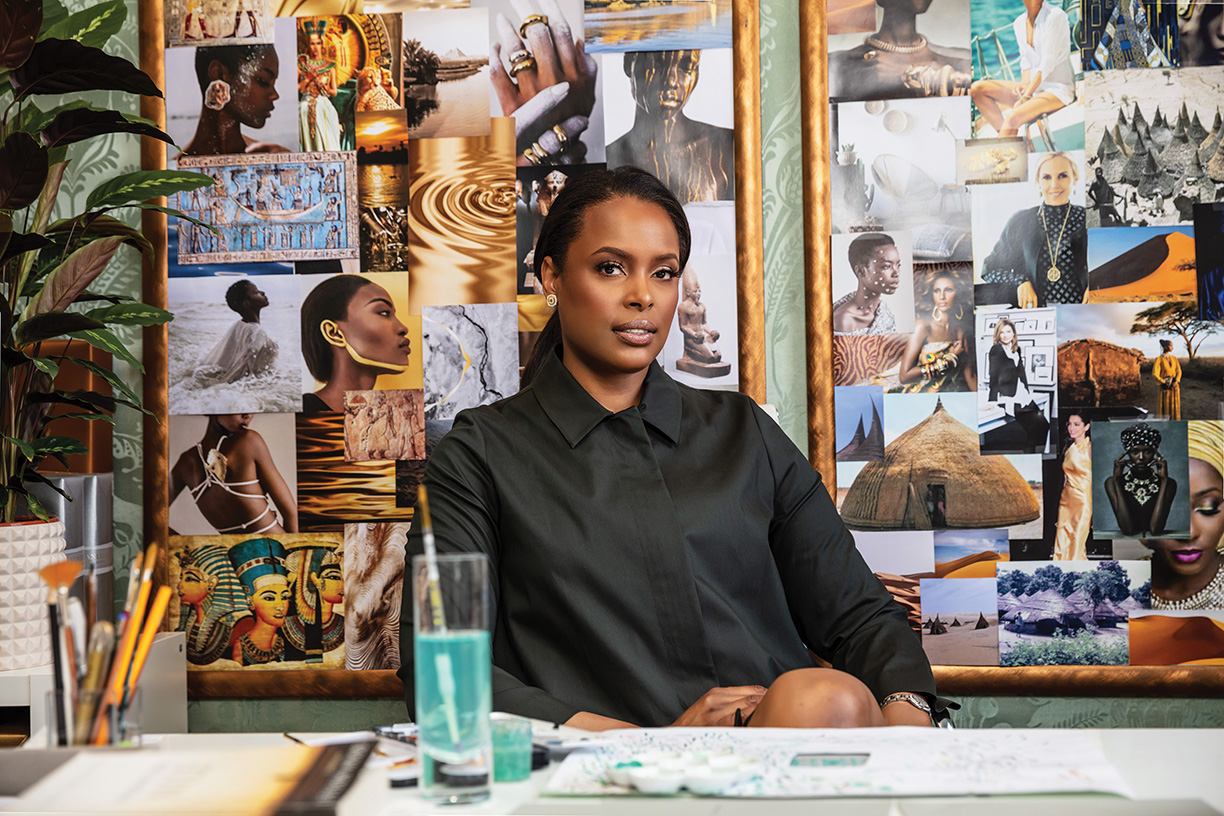
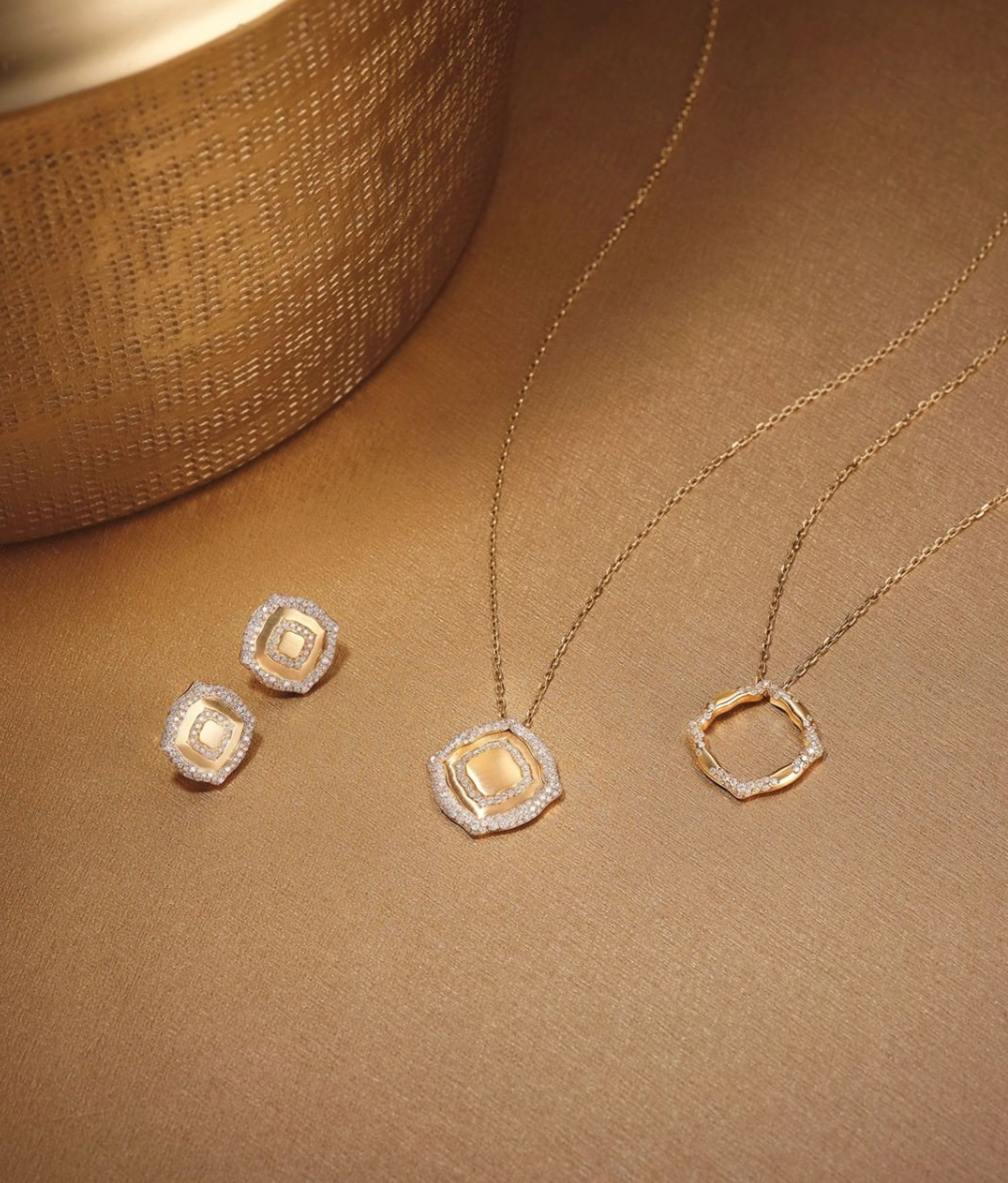
Pieces from The Nile Collection, inspired by Ancient Egypt.
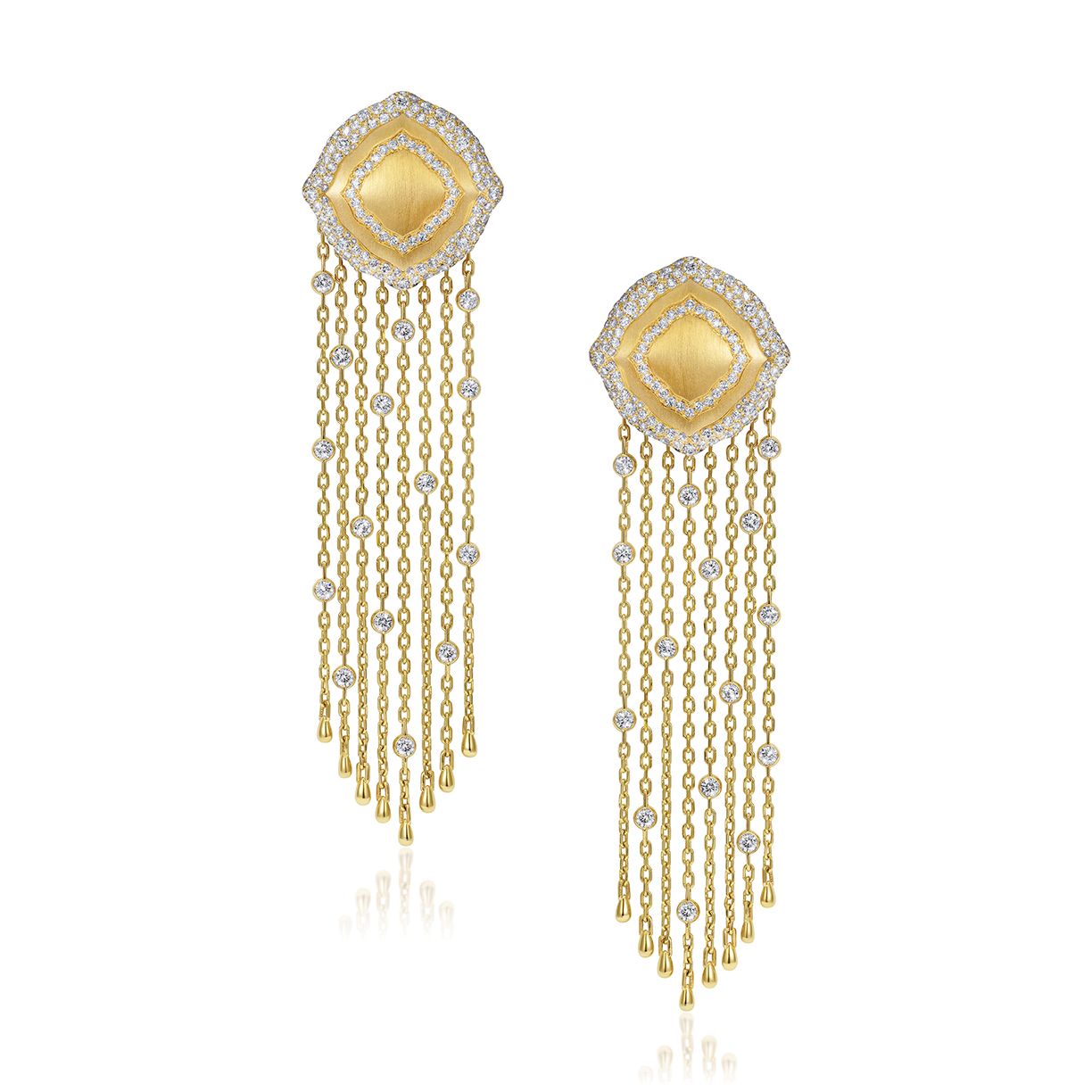
The Nile Yellow Gold and Diamonds Fringe Earrings.
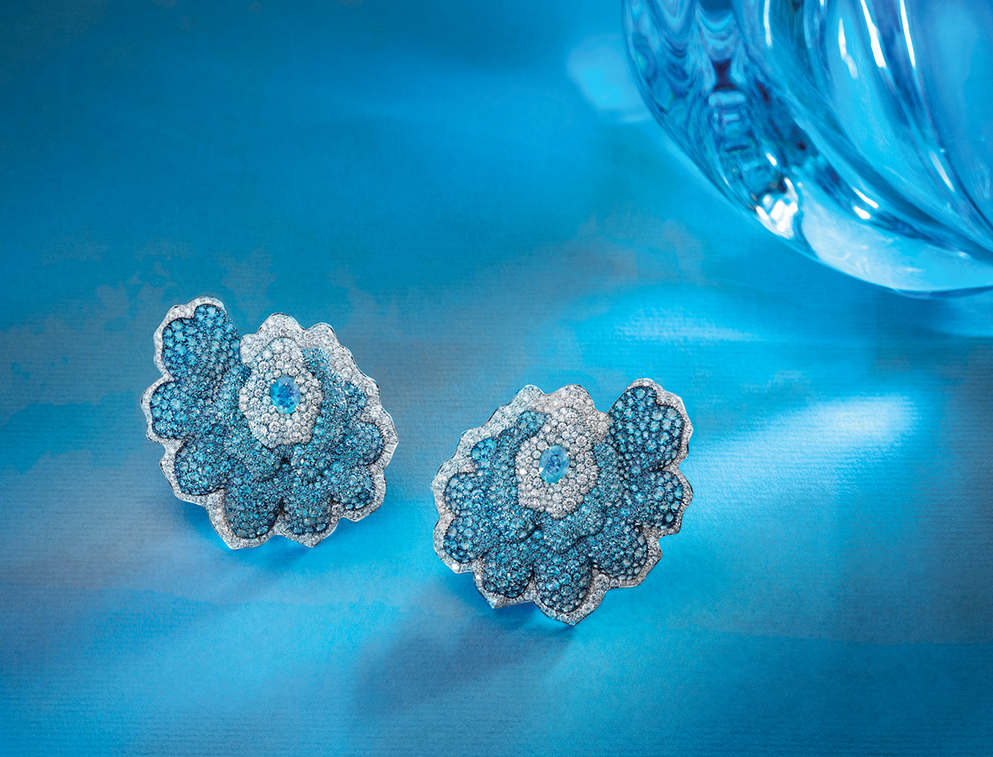
Enchanted Garden Titanium Paraiba Flower Earrings.
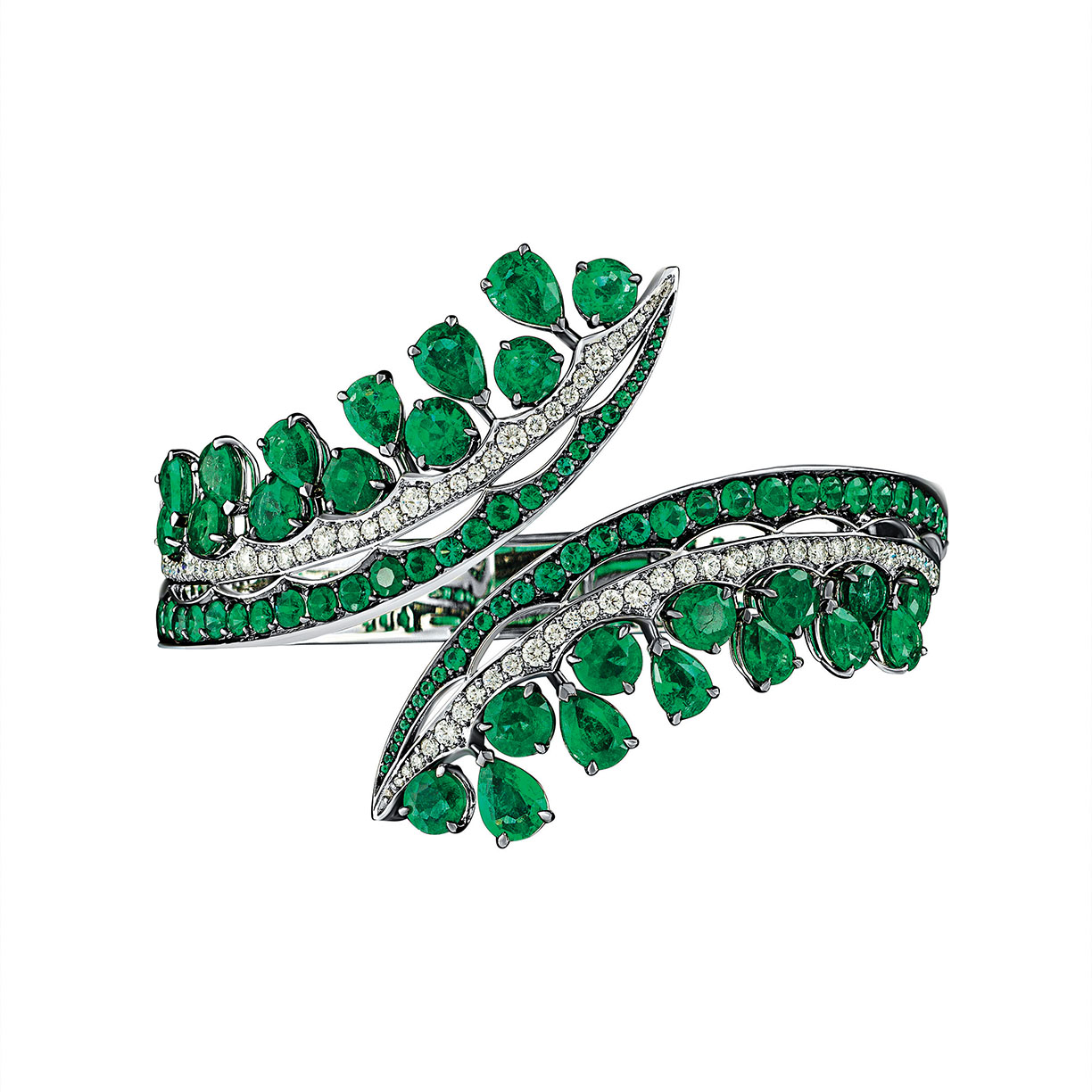
Legends of Africa Grand Bangle.
According to Vanleles Diamonds’ website, its “unparalleled belief in responsible mining” and commitment to the ethical sourcing of gemstones and precious metals has brought a new direction to the world of fine jewelry, one that is based in purposeful luxury and beauty.
“For my collections, and depending on which gems I need, I will mainly source them in Africa; Zambian for emeralds, Mozambique for rubies, tourmalines of all colors, Namibia for diamonds and Madagascar for pink and other multi-color sapphires,” Leles explained. “Most recently, Nigeria for blue sapphires. When I can, I travel to these locations personally to buy my gems, other times we work with suppliers that adhere to human rights policies and have strong corporate social responsibility.”
Vanleles Diamonds’ strong commitment to responsible mining and the African community is evident in its philanthropies, mainly the Malaika Foundation, a charity that seeks to empower Congolese girls and their communities through education and health programs.
“The funds we give go straight into these communities that so desperately need them, and in a very fast manner,” Leles says. “For Malaika, for instance, they only have one employee outside Congo, and no real estate rent, so the money is really going into the community and not to pay high salaries and rents in the West. We sponsor girls, and I can see tangible results directly. We chose charities that are small and the employees are on the ground.”
For an especially unique piece, Vanleles Diamonds offers bespoke consultations for custom made, handcrafted jewels. “The design process always starts with the client’s wishes.” Leles says. “During our meeting, I am able to capture their true desire, understand their lifestyle and then we embark on a unique journey to create something exceptional that will last generations to come.”
Finding friendship in diamonds allows Leles to focus on the most important things in her life — her family and business. “[I have] freedom of creations, where to source, how to send my message and freedom for being a mother of young children, I can work when I put them to bed and not miss many matches and activities,” Leles says. “But I certainly work longer and harder!”
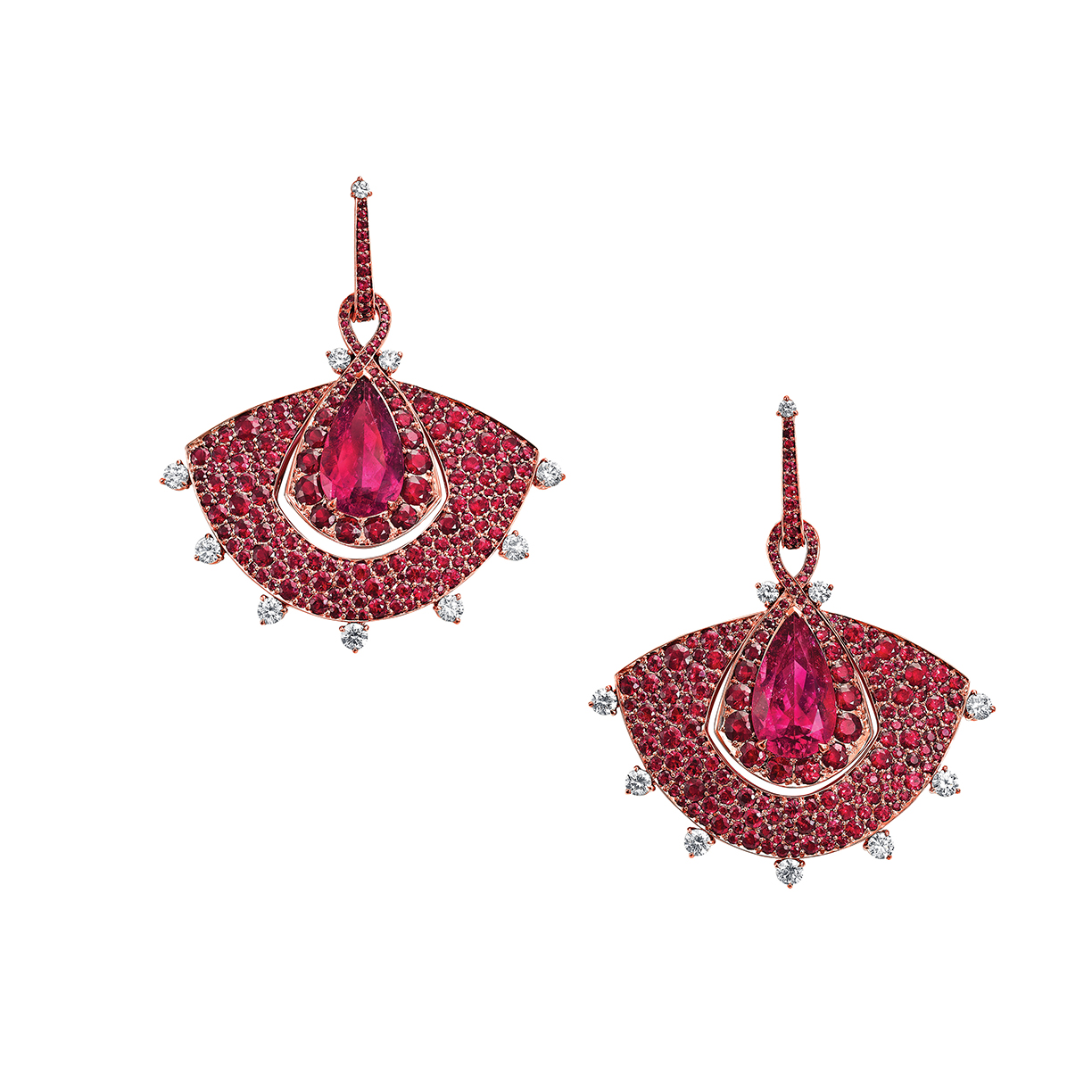
Above: Out of Africa Fan Earrings crafted in 18k Rose Gold with Mozambican responsibly sourced rubies and rubelites.
Below: Statement Cocktail Ring
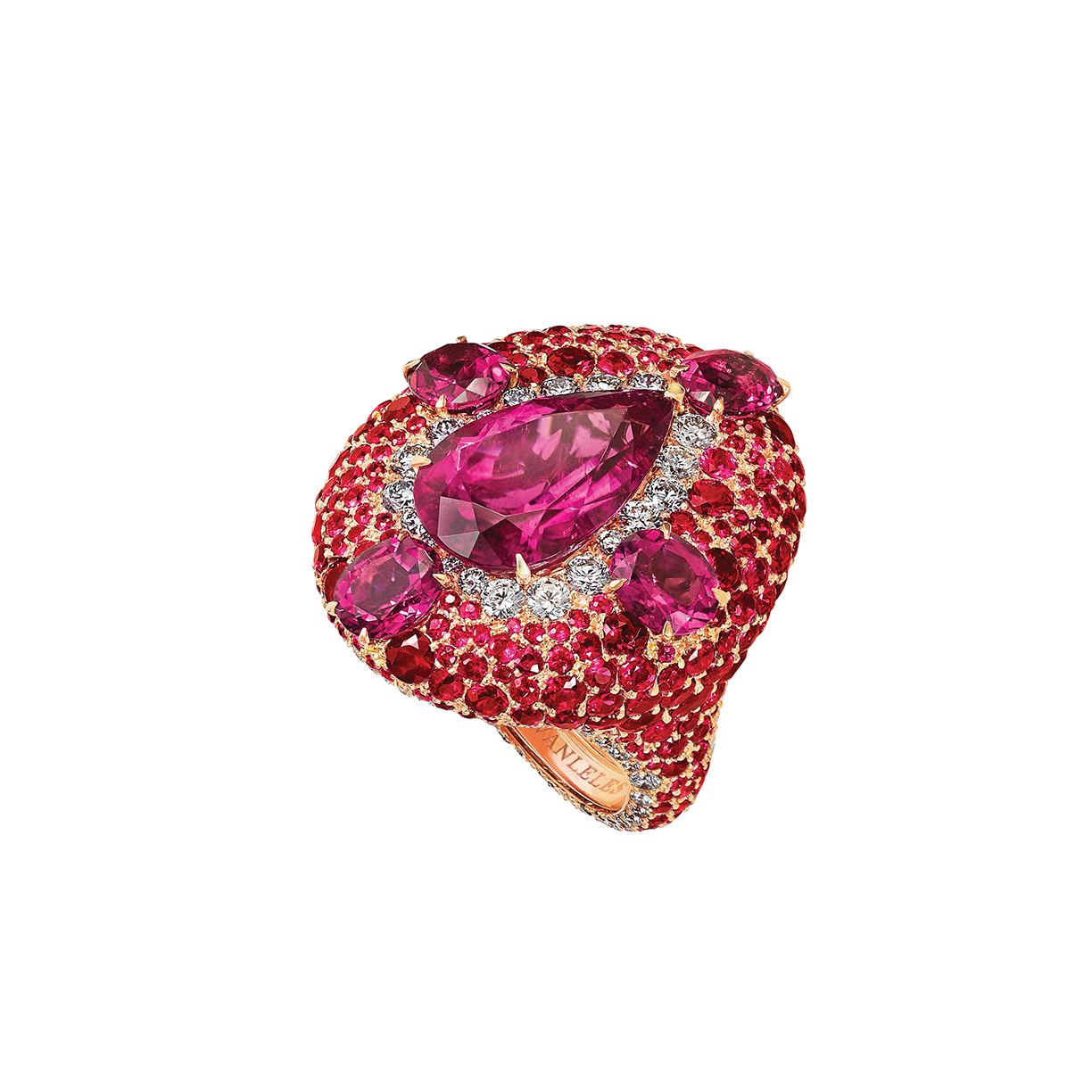

Photo by Rick Chaffiotte Photography.
Interior Designer Marissa Stokes aims for designs that are classic and timeless. And says don’t overlook the ceiling.
For designer Marissa Stokes, home has been a variety of places. Home was growing up in New Jersey, where creative parents and a need for change led to an intense love for interior design at a young age. Home was also New York, where she earned a degree from Parsons School of Design and worked her first jobs at elite design firms, including David Kleinberg Design Associates, Victoria Hagan Interiors and Jayne Design Studio. And now as an accomplished designer, home is more than just a place — it’s every threshold she passes, every piece of furniture she chooses, every decision she makes in order to help craft the perfect space for her clients. We spoke with Stokes about her experiences in the industry and how her love of interior design has transformed her career so far.
How do you think living in New York affected your design style and preferences?
You’re just exposed to so many amazing things, being in and around New York City. The architecture alone, having incredible museums at your fingertips. I also went to school in NYC; I think that was an incredible experience, but also had a huge influence on my design aesthetic, just having everything at your fingertips, between different cultures, food, architecture. I feel fortunate to have lived there and so close to there still now. I love New York City.
When was the first time that you ever thought about working in design?
I really have always wanted to be an interior designer from a very young age.… I think it’s because my parents are both very creative people, always doing things to improve our home.… My dad made furniture, we even had a woodshop in our basement. I just had this love for transforming spaces and the process, and I just fell into it very naturally.
Did you learn wood craftsmanship yourself?
Yes! I had all the tools at my fingertips in the shop, and I am still able to use them now, a bandsaw, a tablesaw, et cetera. We also had a sewing machine, so I grew up sewing at a young age — we’d be making window treatments and pillows. I was always transforming my personal space, shifting things around, changing them or painting them. Making them look different. It was just something I always loved to do, and still love it.
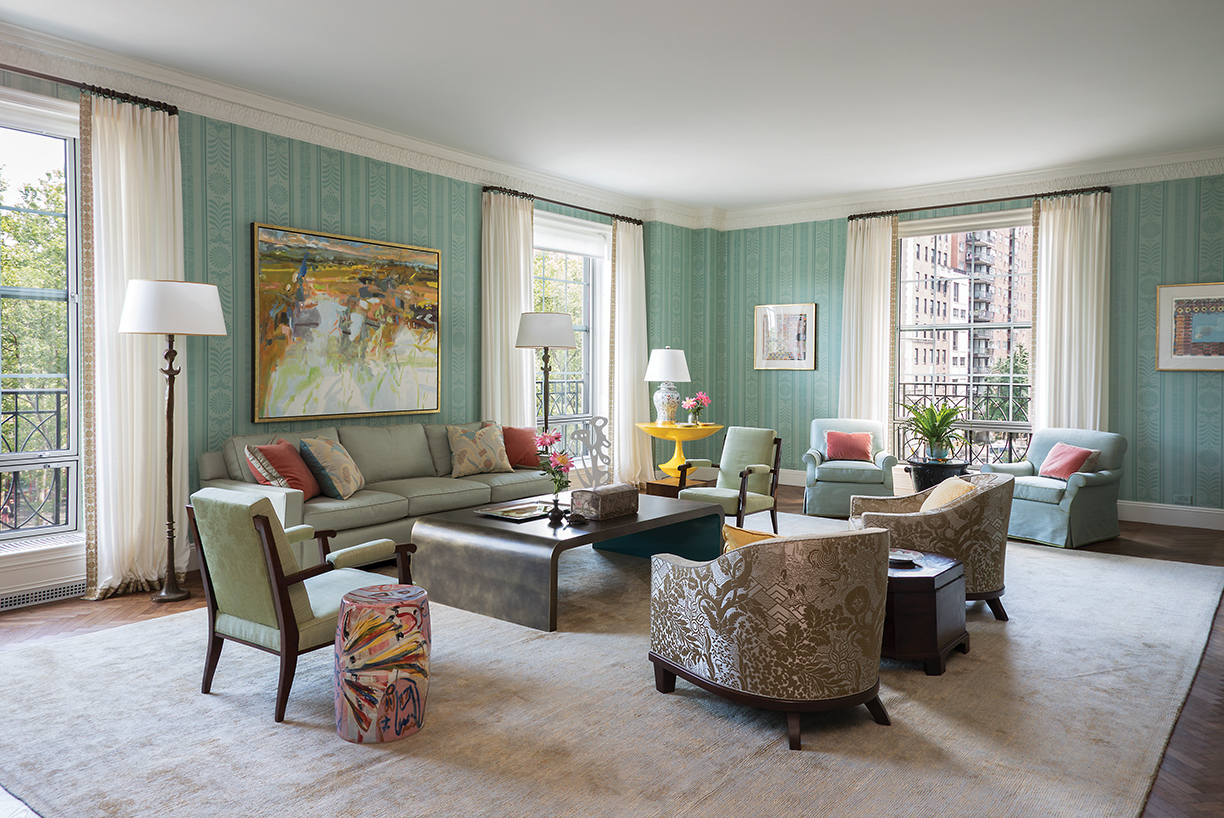
A bright living room situated in an Upper East Side apartment.
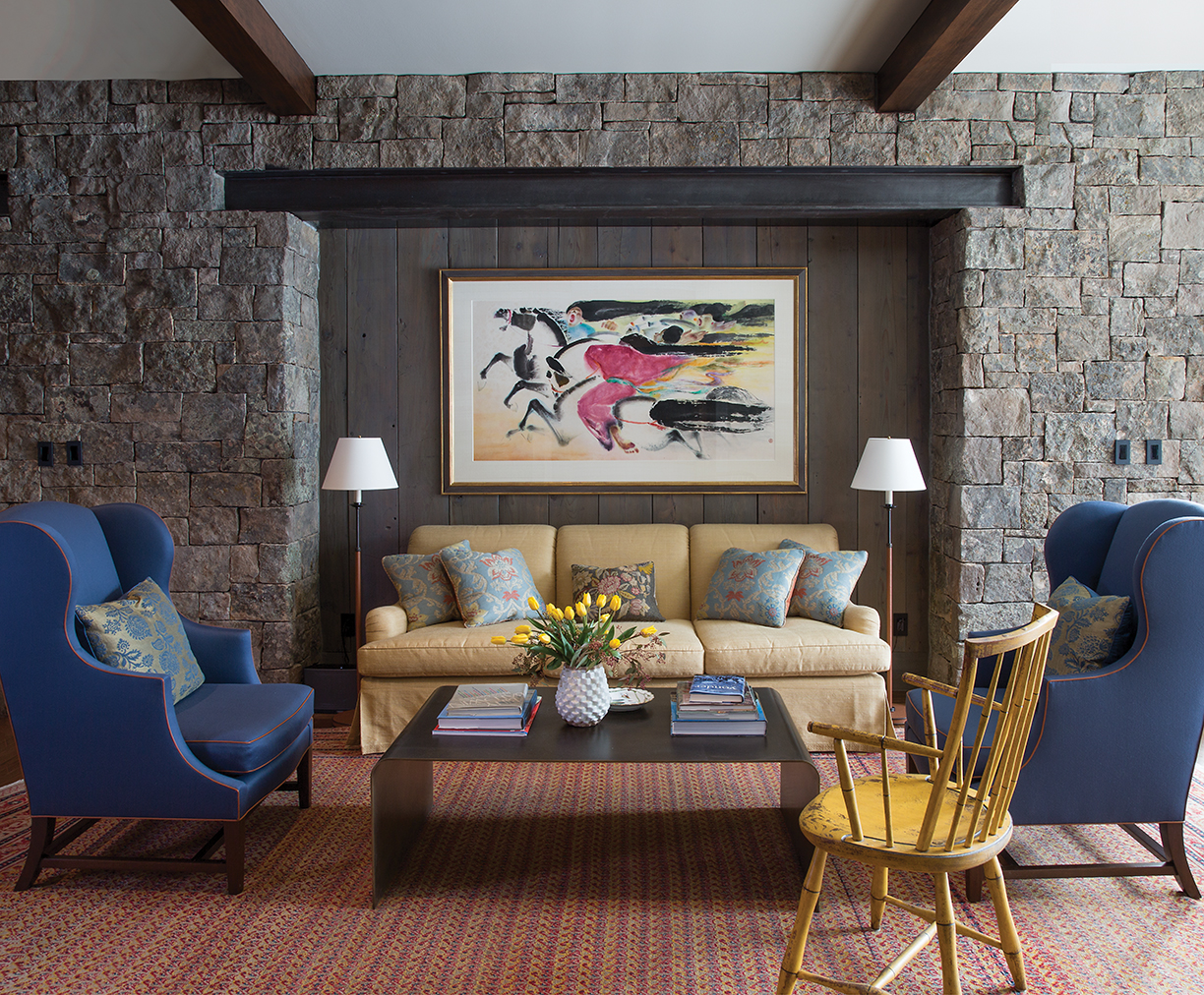
The corner of a library in a Montana lodge.

A Mediterranean Revival home on the Intracoastal in Palm Beach.
Above photos courtesy of Jayne Design Studio.
Why do you do what you do, what about art and design draws you into doing it every day?
I love making people’s dreams come true. There’s something so rewarding about helping a client transform their space so it’s not only functional, but beautiful. In terms of art and design, there’s so many artists and creatives out there who are doing incredible work, and I’m being exposed to them, just learning and growing. It’s another reason why I love what I do. Every day is different and I just love that.
Are there any activities outside of work that help inspire you or your work?
Outside of work, I’m always trying to get out in nature, go for a walk or hike — nature is always inspiring. I feel like I can always pull things from that. I love to travel as well, even though it’s been a bit difficult to do so.
Where’s somewhere you love or would love to go?
My dream place I’d love to go is Greece. It really offers everything. It has ancient and historical sights, of course, but also beautiful landscapes and amazing food.
What has been your favorite project to do?
I worked on a project for Jayne Design Studio in Palm Beach. It was my first project as a senior designer for the firm. It’s a Venetian-inspired home on the Intracoastal. The clients were art collectors who wanted to enjoy the views and display their art. We designed and decorated a home that was quiet, clean and sophisticated to balance their collection and the architecture. I loved the home, its location and the clients. I will always have a soft spot for it.
When it comes to designing, what is the most important element you have to remember?
Well one thing that tends to be overlooked, I think, is the ceiling. It’s very important to design from top to bottom, to think about ceiling work, a lighting plan, and overall how it’s treated and how it affects the space.
Is there a piece of art in your own home that you would never consider selling?
Everything is here for a reason, so not one specific piece.
It’s always important to surround yourself with things you love, even if it’s a bit eclectic, surround yourself with furniture and art that you love. When you do that, things just kind of work together. There’s no standard.
What do you want people to take away when they look at your work?
I want people to find it classic and timeless, something that could last forever. I don’t want someone to walk into a space and instantly date it. I want the clients to be comfortable in their home for a long time. Keep things sophisticated.
What advice would you give to someone going into design?
Don’t be afraid to roll up your sleeves, you have to wear a lot of hats in this industry. Maybe start with an internship, but, all in all, do whatever you need to do to learn.
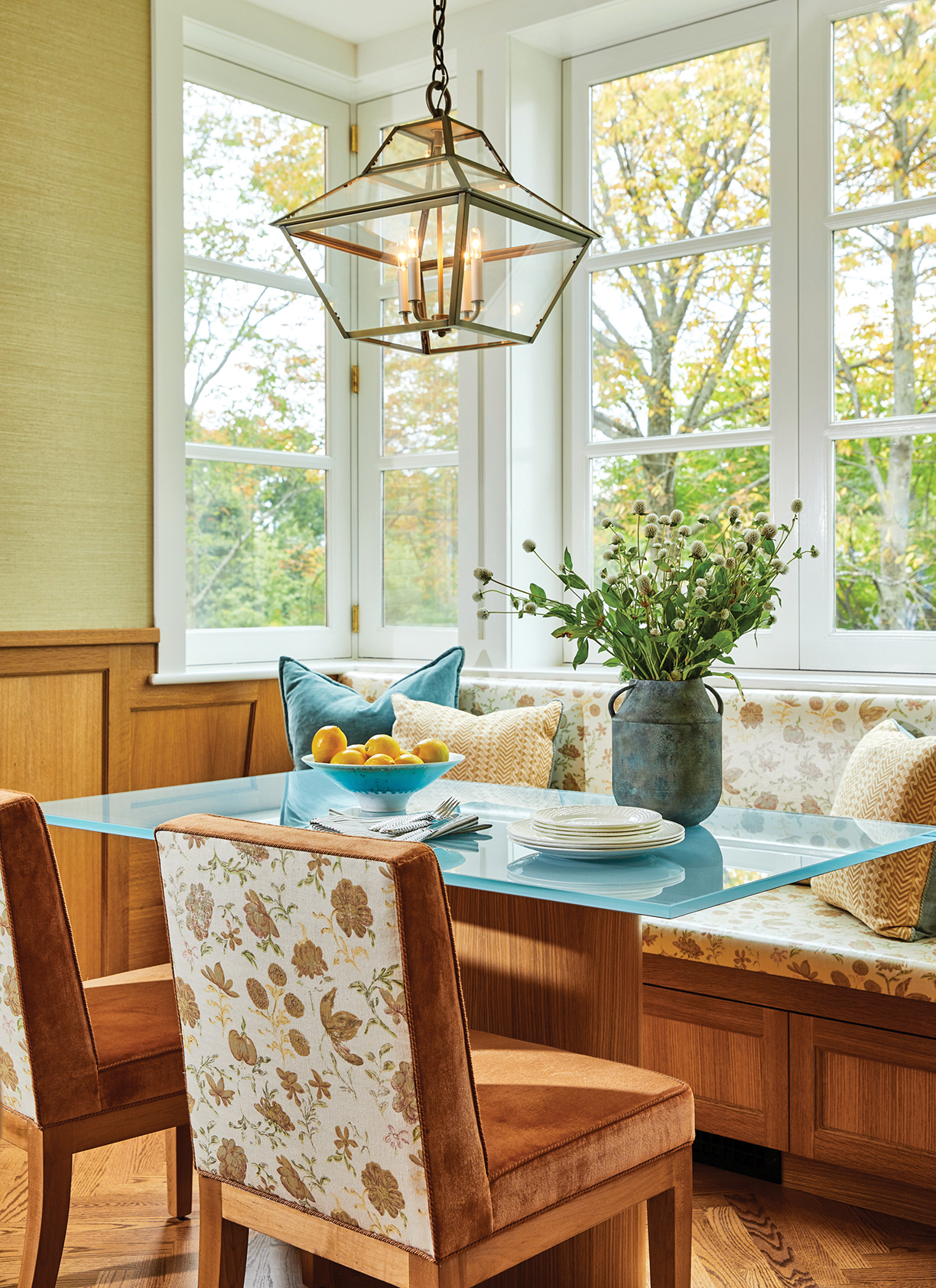
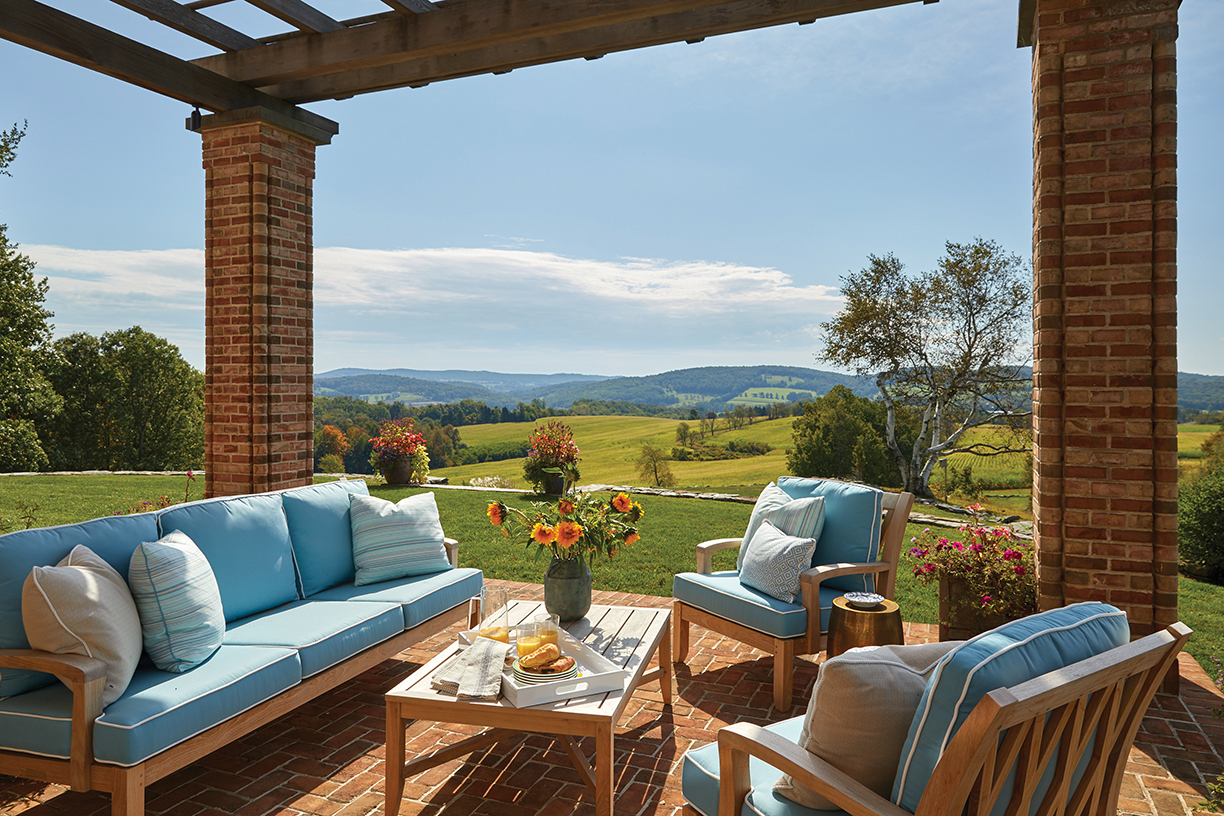
At left: A cozy breakfast room nook with a custom-designed banquette. Photo by Aaron Thompson.
Above: An outdoor terrace overlooks Dutchess County. Photo by Aaron Thompson.
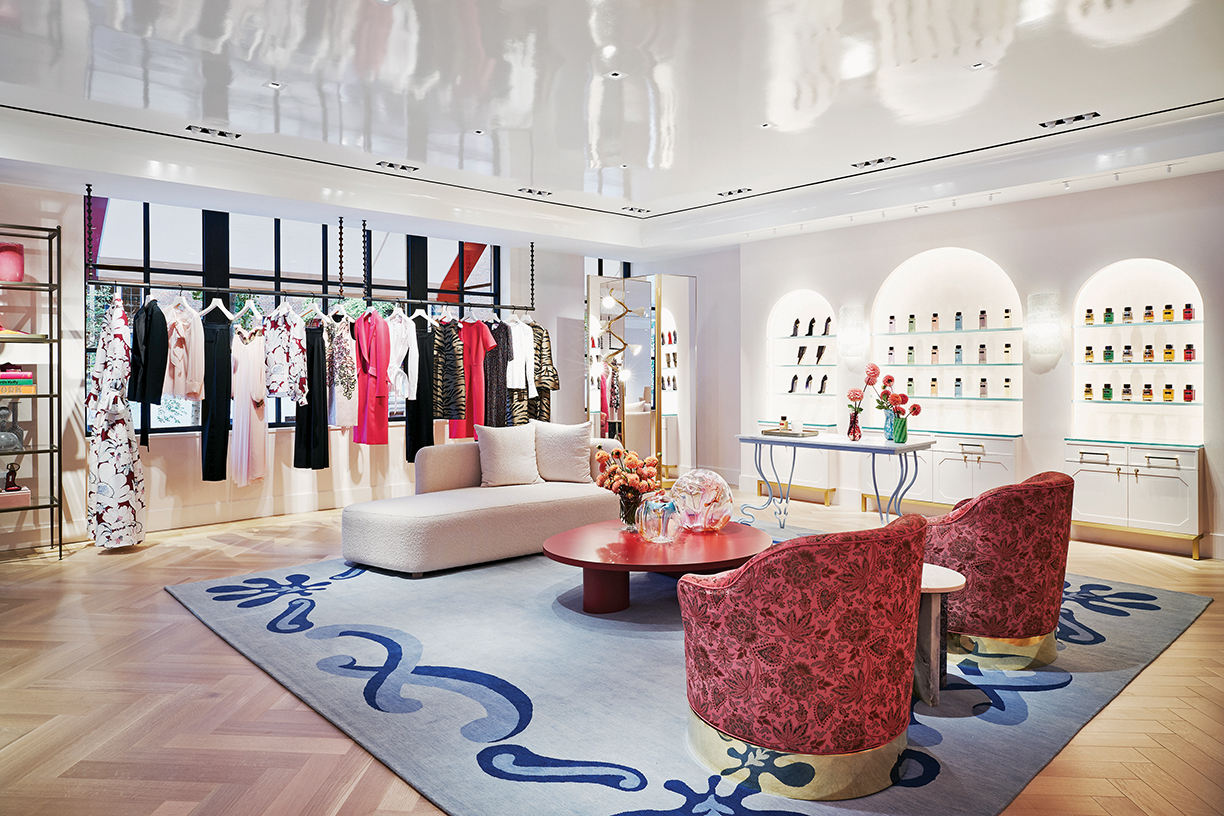
Photos courtesy Katrien Van Der Schueren.
Katrien Van Der Schueren is the founder and creative visionary behind Voila! Creative Studio, a visual laboratory where she envisions, creates and fabricates a full range of bespoke fine art, objects, furnishings, lighting, event and stage sets, and accessories.
In the grand scheme of her career, designer/artist Katrien Van Der Schueren says that her move to America in 2002, specifically Los Angeles, was the first main challenge she met that led her to where she is now. With her experience working in a variety of fields, from the European Commission to marketing, she says that she felt obliged to reinvent herself and that this new world gave her “the opportunity and the audacity to follow a new path.”
Through perseverance, courage and a “huge learning curve,” she remains the leader of Voila!, known as a visual laboratory with endless possibilities. “We are storytellers and translate it into material form. We are creative problem solvers that make the project happen,” says Van Der Schueren.
What about art and design draws you into doing it every day?
It’s an intuitive thing, I think.… I didn’t really think it through. It just felt natural to me and I followed my path of learning and exploring and fine tuning the direction as I went along.
I love working and exploring materials and their possibilities. I love discovering new textures, new techniques, new colors, new color combinations, new designs, new styles … and in my job the learning and discovery is endless. I love the storytelling [aspect] when we work on projects. Imagining the environment pieces will go to, who will use it, look at it and how to tell that story and make that story happen with shapes and form and materials.
What influence, if any, do you get from living in California?
So many things. California is such a melting pot of cultures providing so many creative impulses on a daily basis. There are so many different influences to draw from here that it’s hard not to get inspired every day. I still strongly feel like an immigrant on Discovery Road.
Since we arrived in LA, the city has evolved so much. It breathes artistic energy in so many domains, from food to music to artisanal crafts to high-end design. Nature is another big part of California’s inspiration. The ocean, for example, I mean who can resist its magic? And what about the vastness of land in between places when you drive out of the city and what about the evenness of the light and its brightn
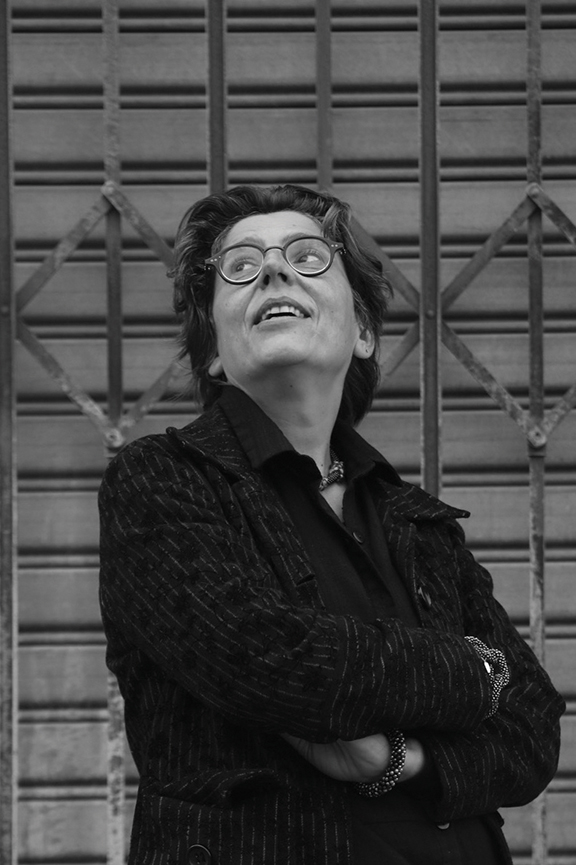
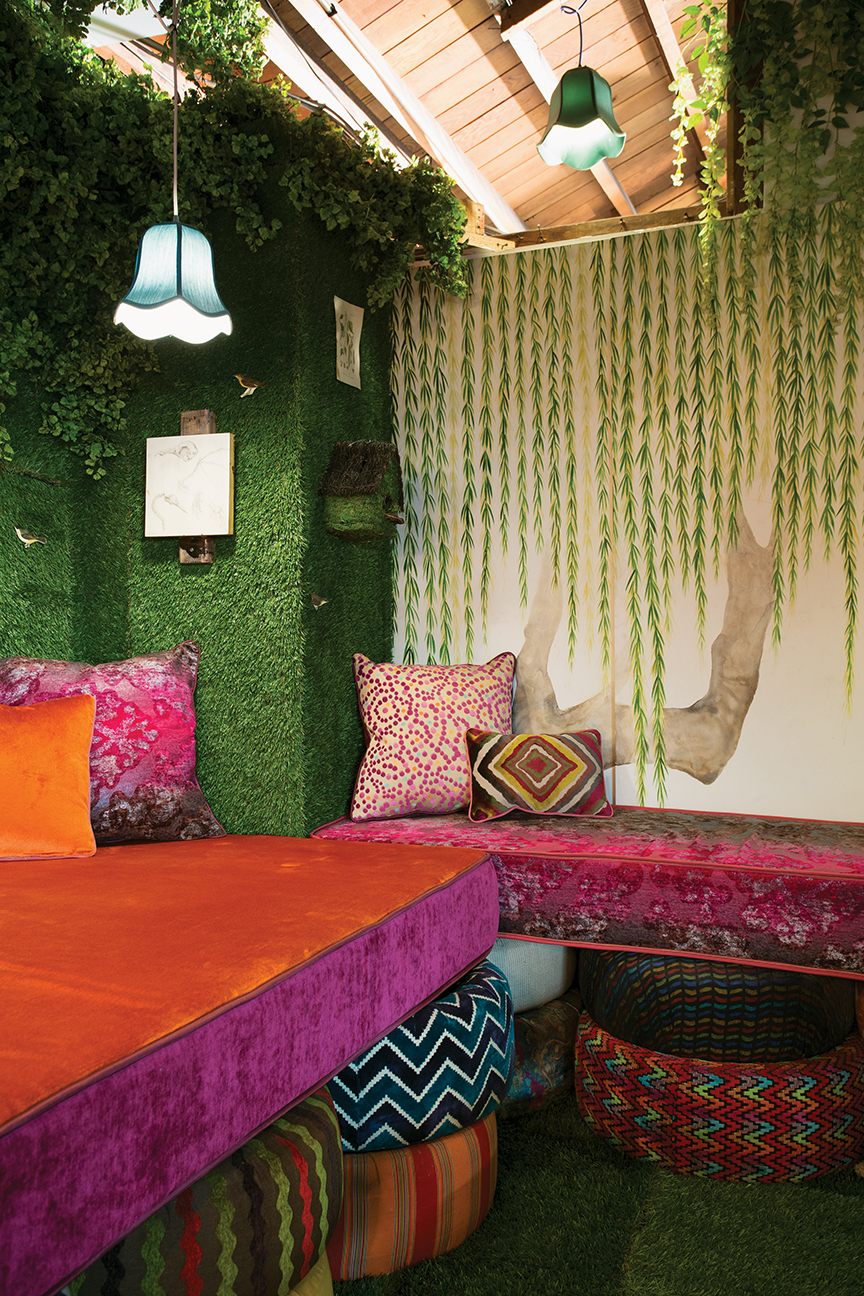
To keep inspiration alive, Van Der Schueren says she needs to connect with the outdoors, whether it’s taking a drive, traveling abroad or spending time with her family outside the studio, “so when I step back in I feel re-energized and spin my wheels on the right things.”
What do you usually draw inspiration from?
Literally everything or anything that kind of stops me in my tracks. That can be the shape of a leaf in the garden, a lyric or beat in a song, a shade of a ceramic cup, my kids’ world, an art installation, a set of a movie I am watching. Anything that stops me and draws my attention.
Tell me about Voila!’s conception and how it operates today. What was the original mission/goal of the studio?
I started as a picker. As that’s where it intuitively felt right for me to start. Learning styles, periods, et cetera. Then my intuition just led me to start making, first by combining finds and turning them into either art or furniture. Basically, I do have a lot of something I found and it inspired me to make something with it. Then I wanted to learn more techniques and what I could do with materials, started hiring people and learning about that process and its ups and downs with growing pains. Clients would ask me to custom make furniture and art for them and I gradually learned what I liked and disliked, and it all evolved like that with some very risky steps in between, just out of some gut feeling that that was the next step to take. A lot of mistakes on the way, of course, getting back up and moving forward towards a clearer direction.
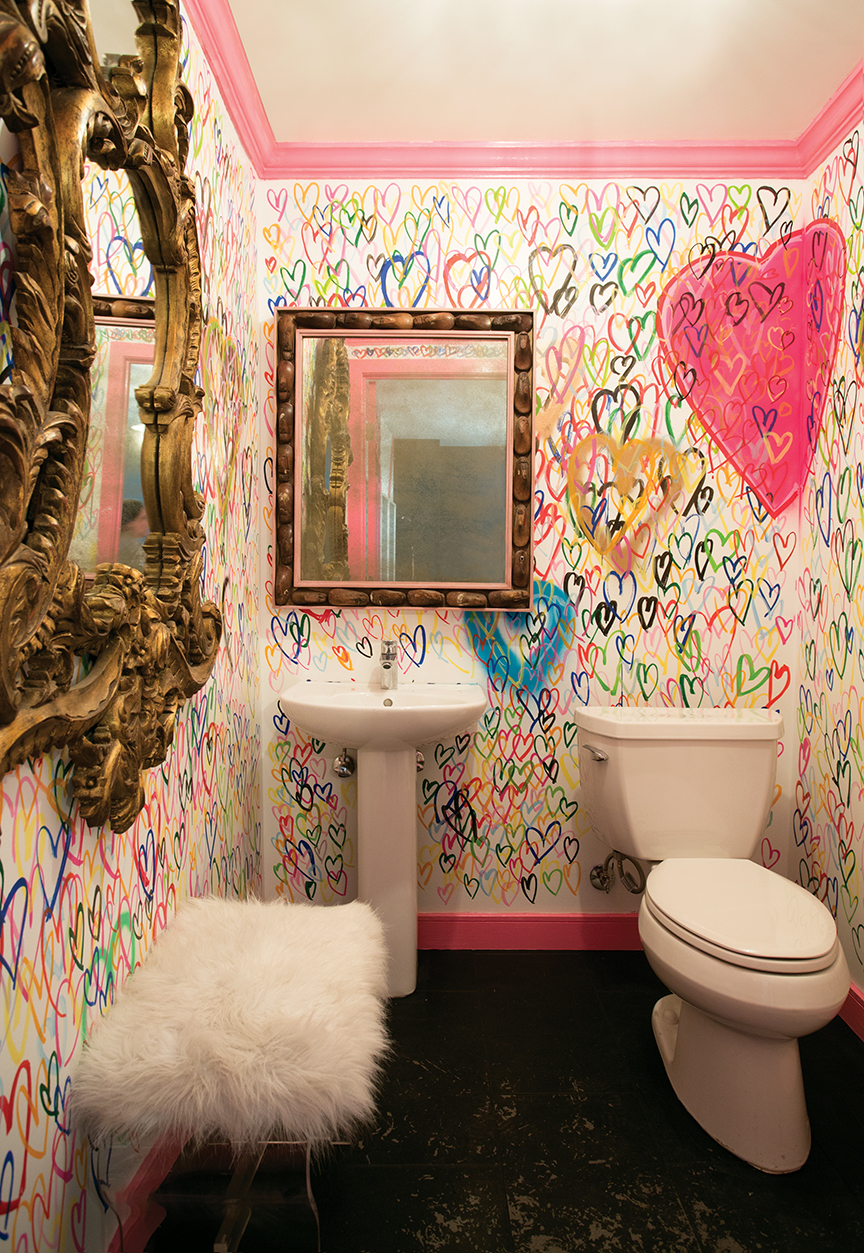
When it comes to designing art for a project, what is the most important element you have to remember? Does this differ depending on the type of space you are working in?
Each project is its own. When we start an art project, I look at the story first. The visual story (the interior design choices and the environment and architecture) as well as the audience it’s for. Those parameters will define the art choices. Of course, the location and the environmental conditions are often key as well when it comes down to choosing the materials to work in, and the type of use will also define possibilities.
Is there a piece of art in your
own home that you would never consider selling?
Almost all of them. The pieces I have at home are part of the fabric of my life. I am emotionally connected to them and they make a lot of sense in my home visually.
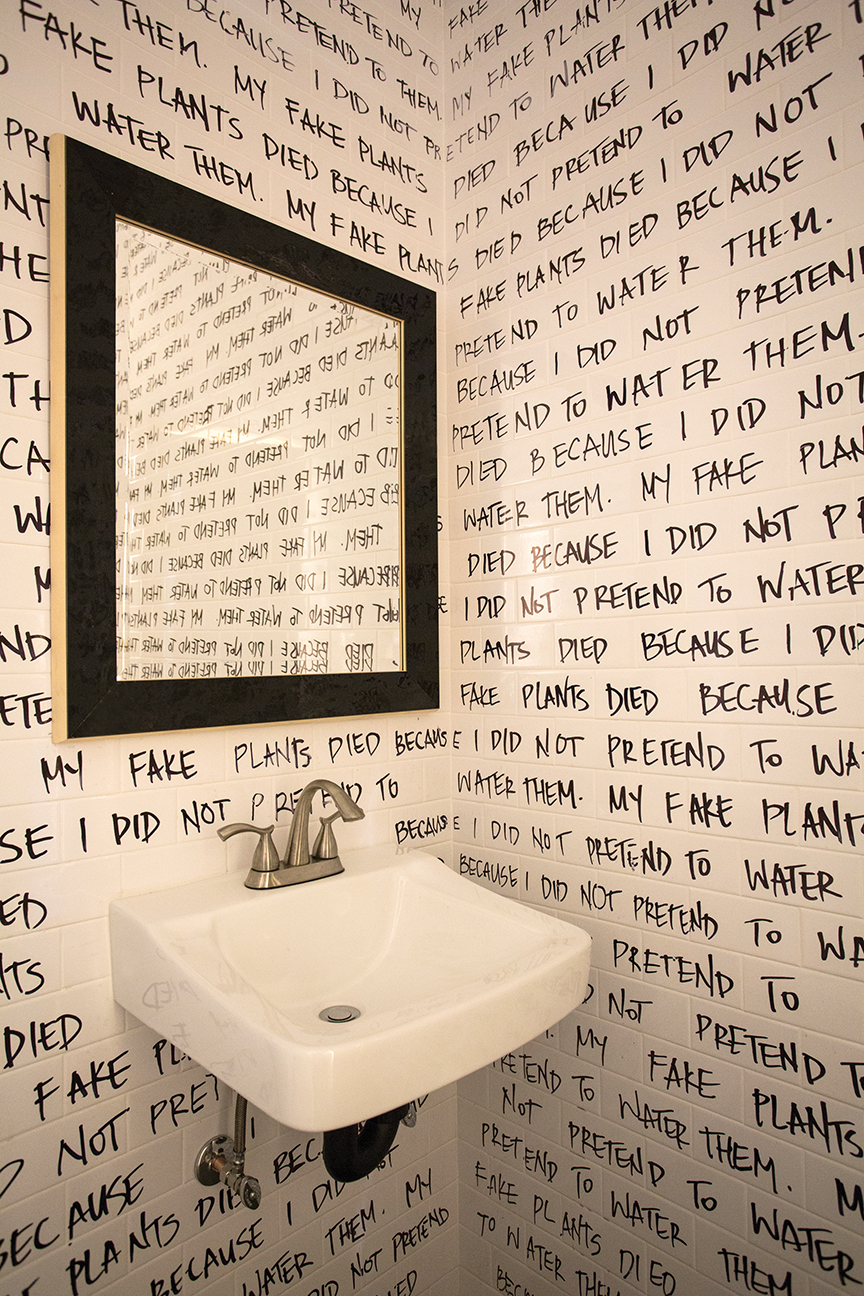
What would be your dream project or a piece you’ve always wanted to start (or finish)?
Oh boy. A dream project would be that I get unconditional creative freedom and unlimited budget to design and fabricate all the art, and custom-make all the furniture for a unique experiential boutique hotel that also has a music venue on the premises as well as some original and unique culinary opportunities (restaurants/bars, et cetera).
What advice would you give to someone pursuing a career in art or design?
Follow your gut feeling. Only by working your way through you can achieve results and fine-tune direction. Be you
What could be easier to give your own home personality than with the right photo?
Whether it’s a memorable quote or drawing, sophisticated or playful — the right wall decoration can give a home that unique touch that helps further showcase you and your style. When finding the perfect picture, there are some tips that can help to skillfully stage the personality of your space. Katarzyna Kolenda, interior expert and managing director for Dekoria GmbH, reveals which wall decorations suit which type of home decorator and gives tips on how to arrange them perfectly.
Your Natural Habitat
From natural wood to walls of stone, untreated natural materials have once again become the focus of many interiors today. The comfortable, light effect that natural designs have on a room’s style is undisputed and can even be proven to reduce stress, from images of greenery and nature itself to a simplistic color palette of softer greens and whites. So what would go better with an urban jungle look than botanical motifs and photos full of vibrant greenery?
Nature lovers can live out their great passions when choosing frames and photos. For example, canvases that display green or wooden elements give the room a rustic, creative charm. “As [if back] in the forest, the botanical motifs should find their perfect place on the wall,” advises Kolenda.
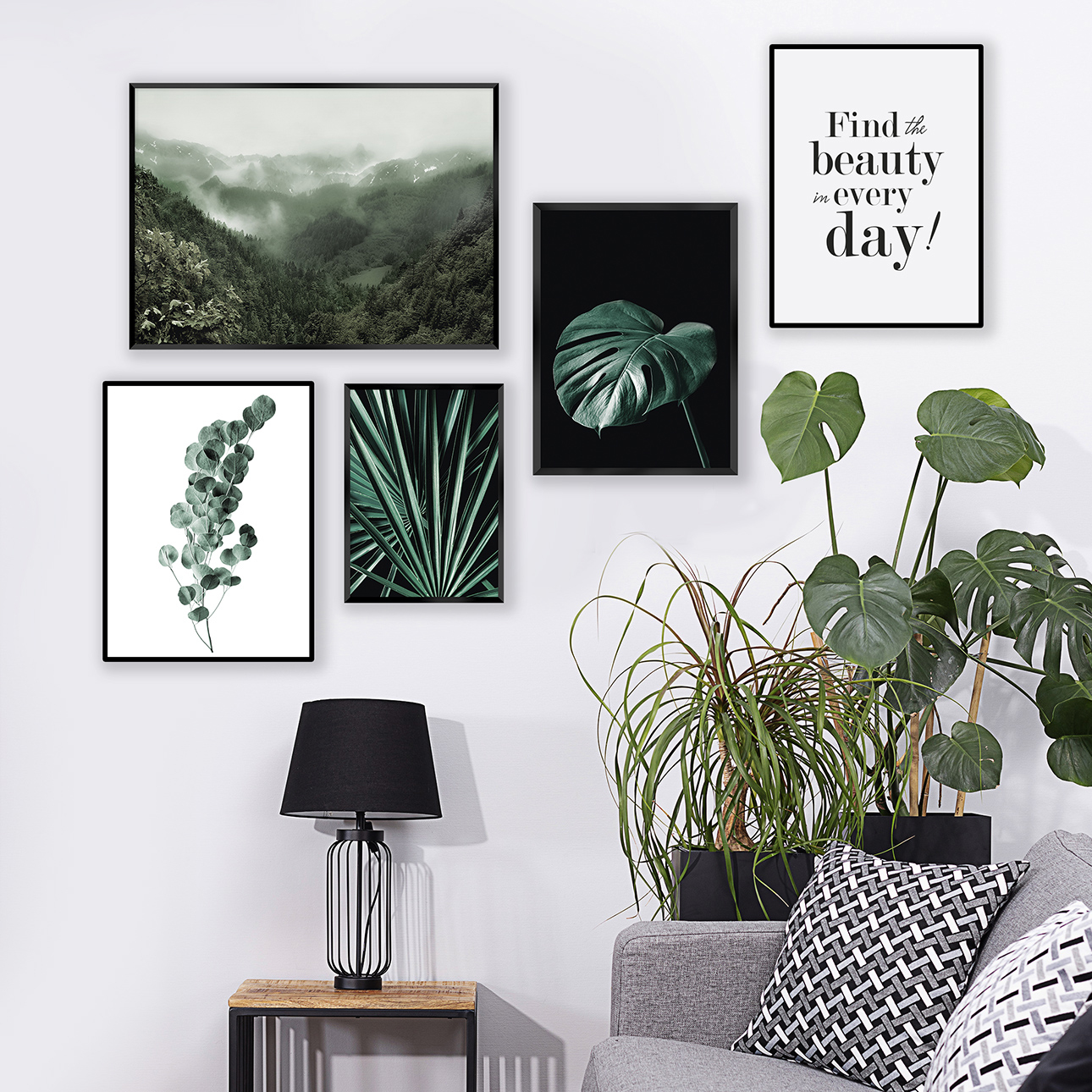
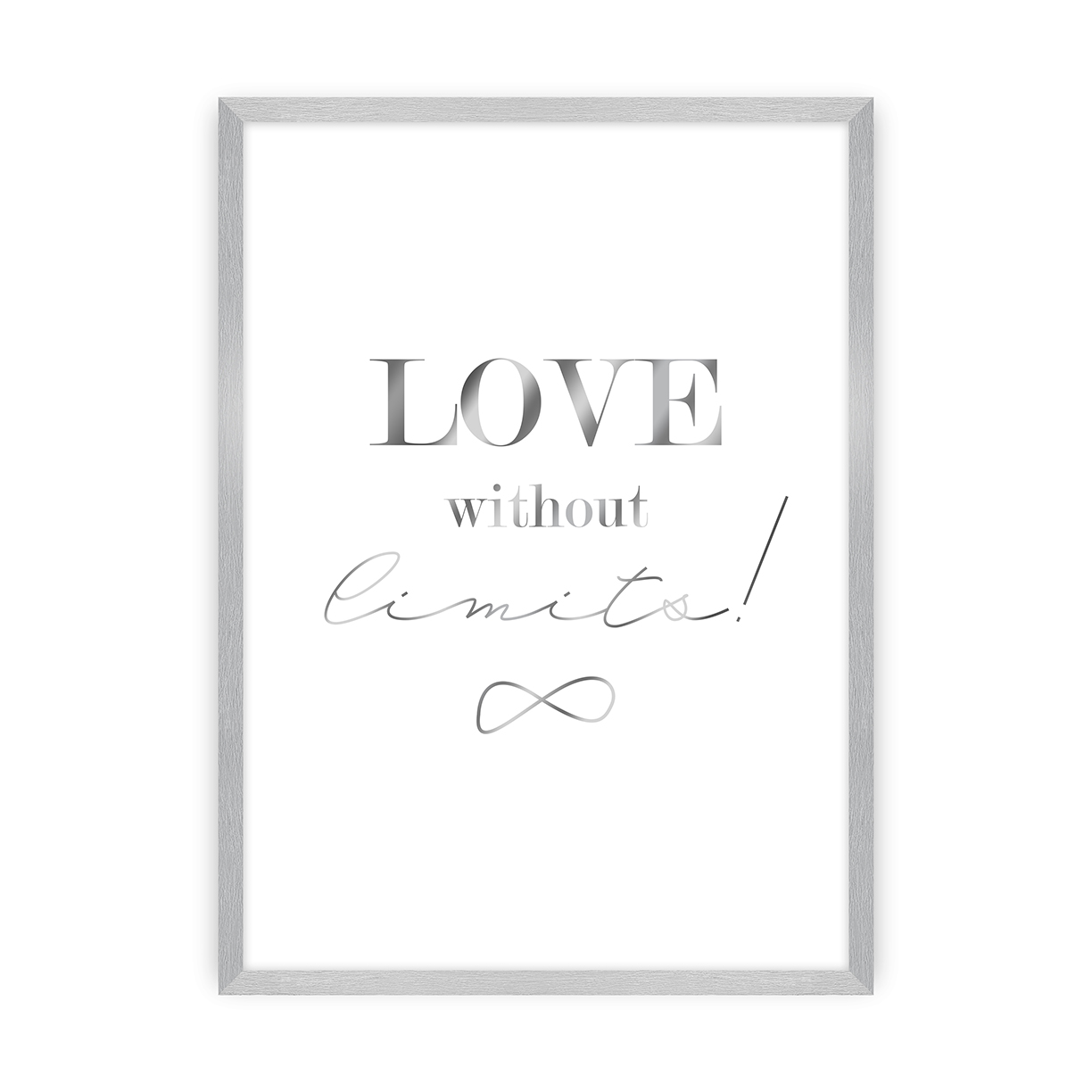
More than Words
The home is a place where you most feel comfortable, a perfect place to organize your favorite thoughts and feelings and give them a place of importance visually, such as a framed photo of a quote or life motto. If you frame a motto of life on the wall, it not only looks modern but also conveys a message to visitors, whether it’s to “Be brave!” or to “Find the beauty in every day.”
“Statements and sayings no longer just belong in the notebook or on a T-shirt,” says Kolenda. “You can give rooms a new mood in just a few moments while looking calm and trendy, especially when combined with other pictures.”

The Art of Change
Each photo or art piece reveals a lot about the person who puts it on display, whether it’s floral patterns for nature lovers or action heroes for die-hard cinema fans. “When finding the right picture, people should simply listen to their gut,” summarizes Kolenda. With passion comes the potential for change, so do not be afraid to change your art or photo style over time. Like art itself, style is never truly static and therefore has the potential to show growth and change.
Architects, designers, artists and more often pull inspiration from their surroundings to create unforgettable final products. Tectonic accessories, designed by Rogerseller, were created with the idea of earth’s most enigmatic natural processes — tectonic plate motion — in mind.
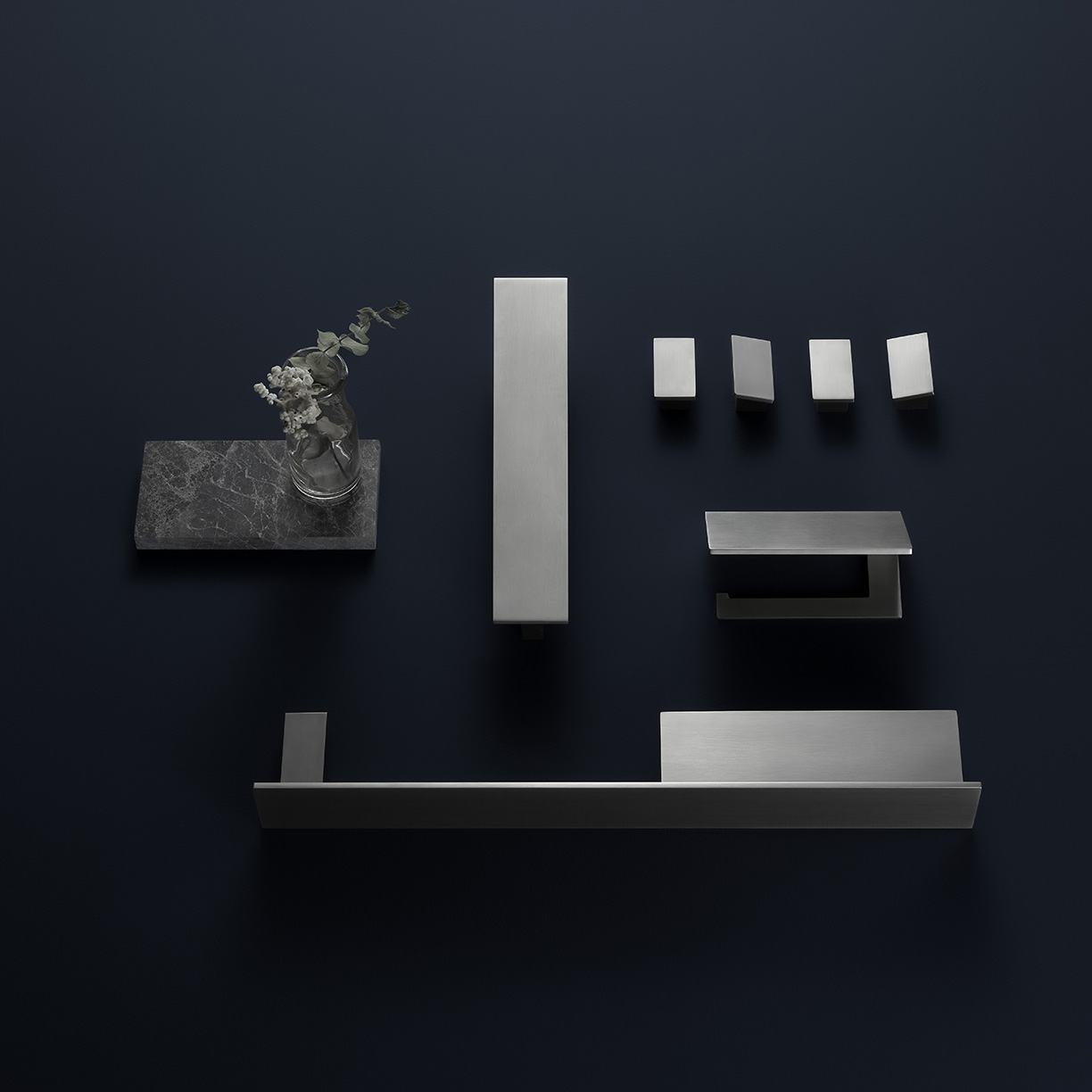
A series of floating plates make up the enchanting collection. They can be placed in various planes and axis’ to each other, representative of the plates that make up the Earth’s surface and their dynamic interaction with each other.
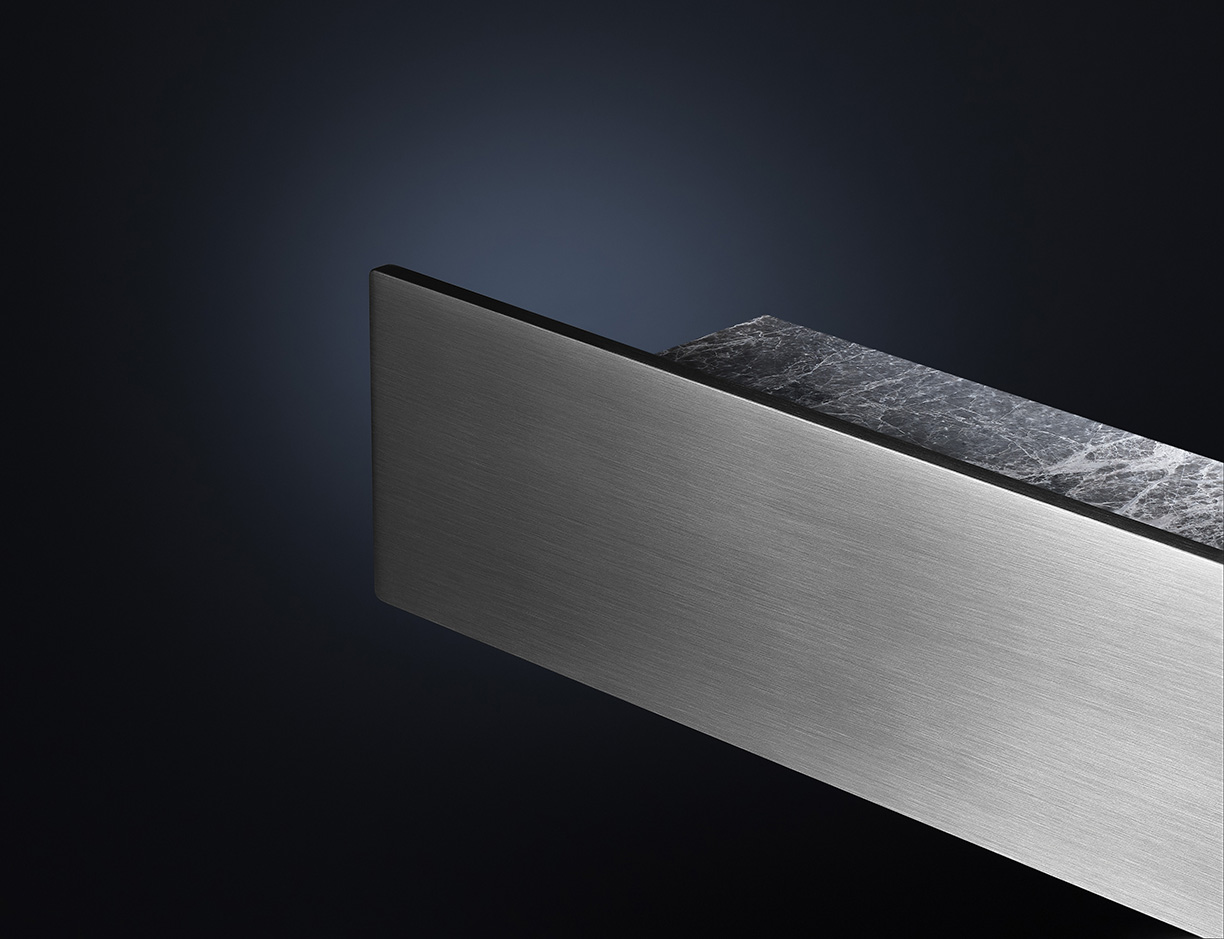
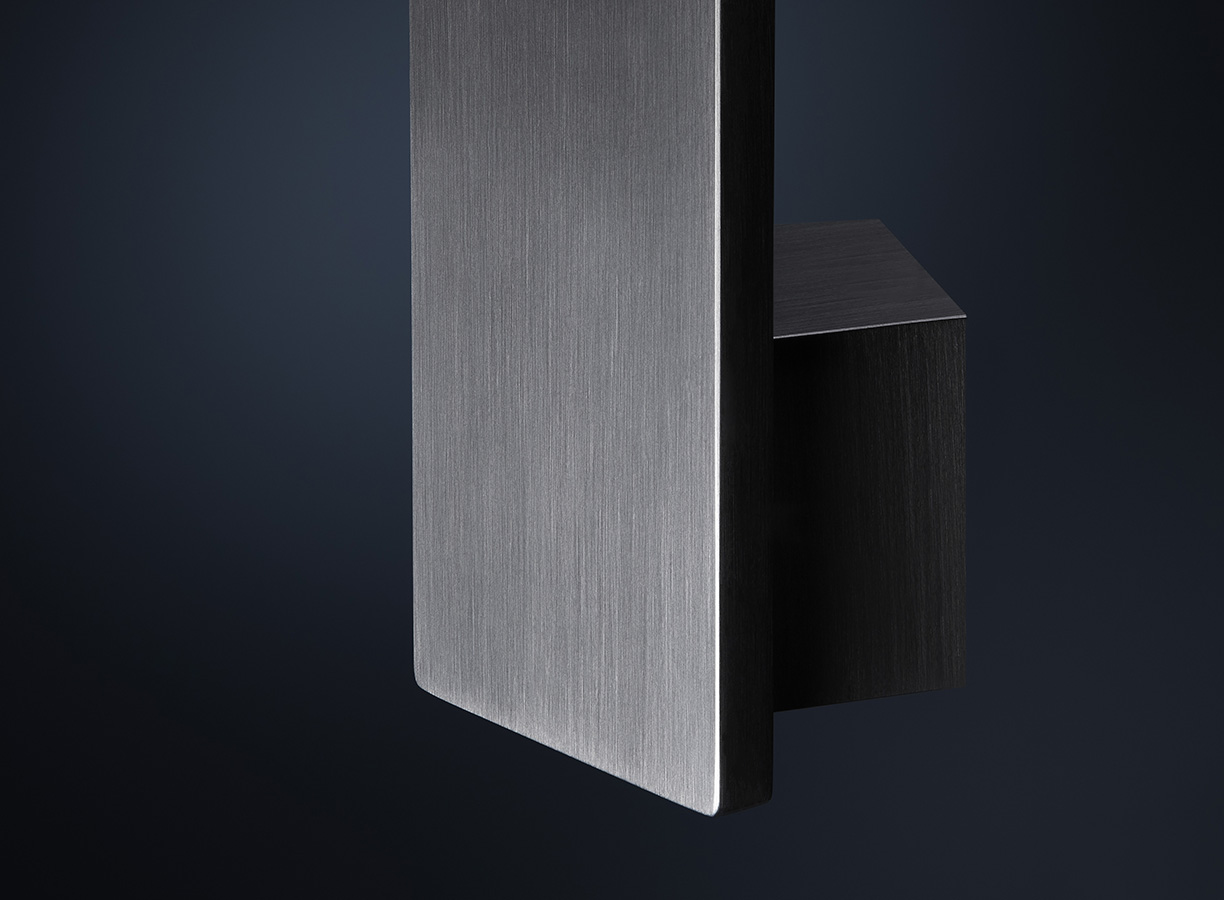

An intriguing addition to any bathroom, these elements are undeniably modern, yet pull from an ancient process that began over three billion years ago. The sleek finishes are appealing in both their function and style. These accessories are the perfect detail to finish your space.
The linear design provides a bold signature aesthetic that appears throughout the collection, which is available in a selection of the Rogerseller Natural Elements finishes.
The accessories feature multiple-length towel rails and shelves (with the option of custom tile inserts), a combination shelf and towel rail, angled and straight robe hooks, double or single paper holders with shelves and a vertical heated towel rail that provides greater heating efficiency.
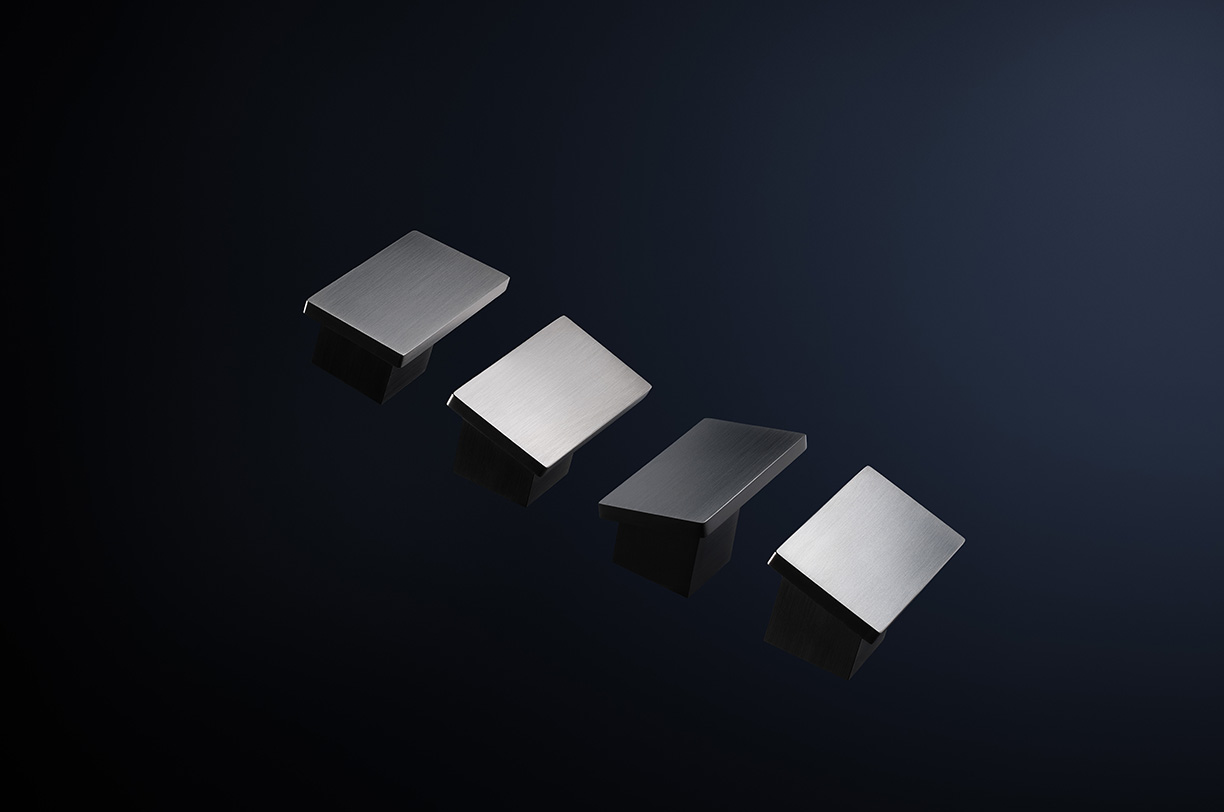
Each rail, shelf and robe hook is of equal height, allowing installation as a continuous linear feature wrapping around the bathroom.
Photos courtesy of Rogerseller
Slanted ceilings have made their way outside of the attic, now in living, dining and bedrooms. Designing under these slopes can be tricky, but there are ways to get around it — and even use them to make the room more elegant and spacious. Here’s how:
1. Light and Airy
Whenever you’re tight on space, adding a coat of white paint to the ceilings and walls can make all the difference. Not only does it add a simple and natural tone, but it’s malleable to design the room to your style.
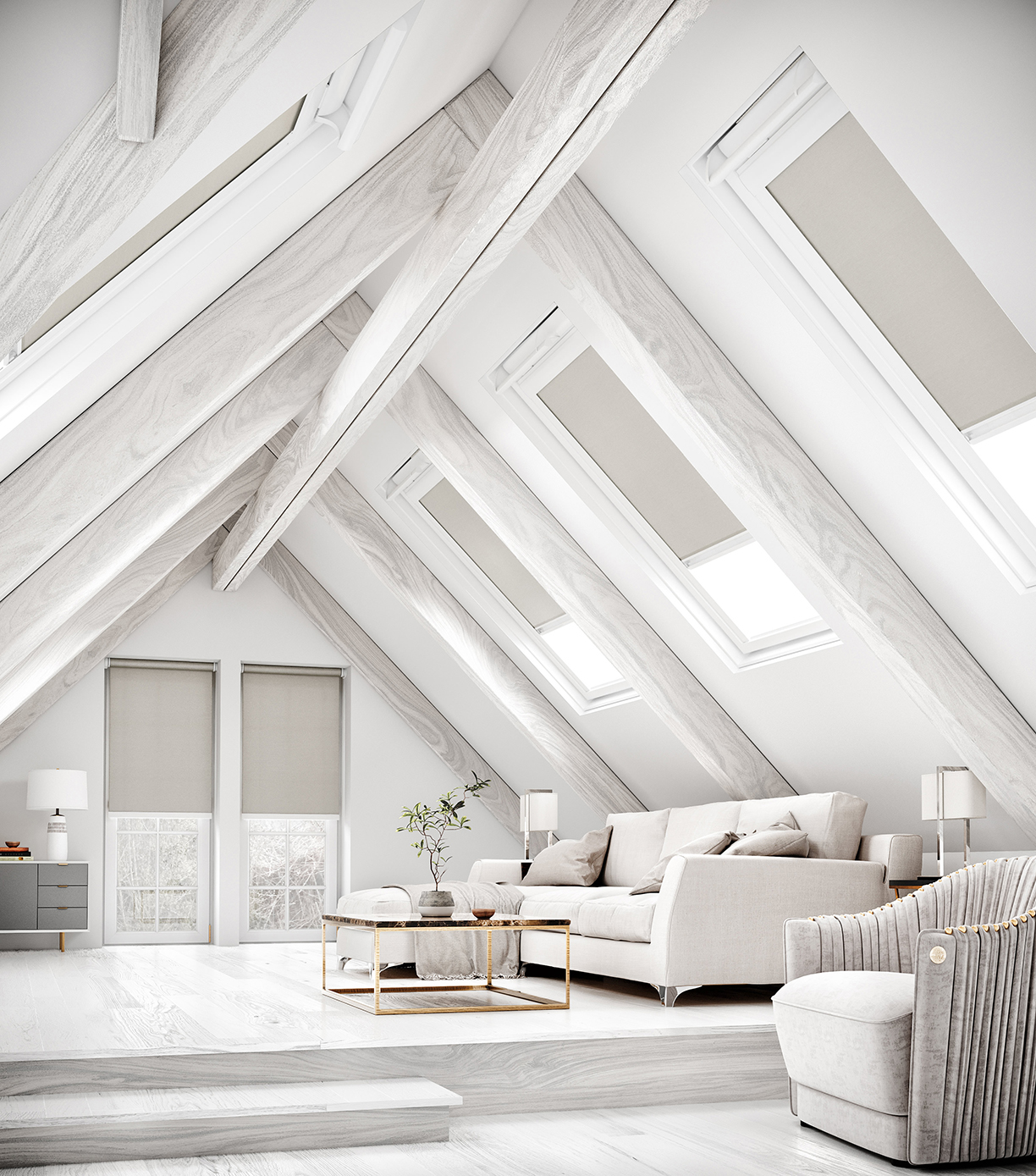
Photo courtesy of English Blinds
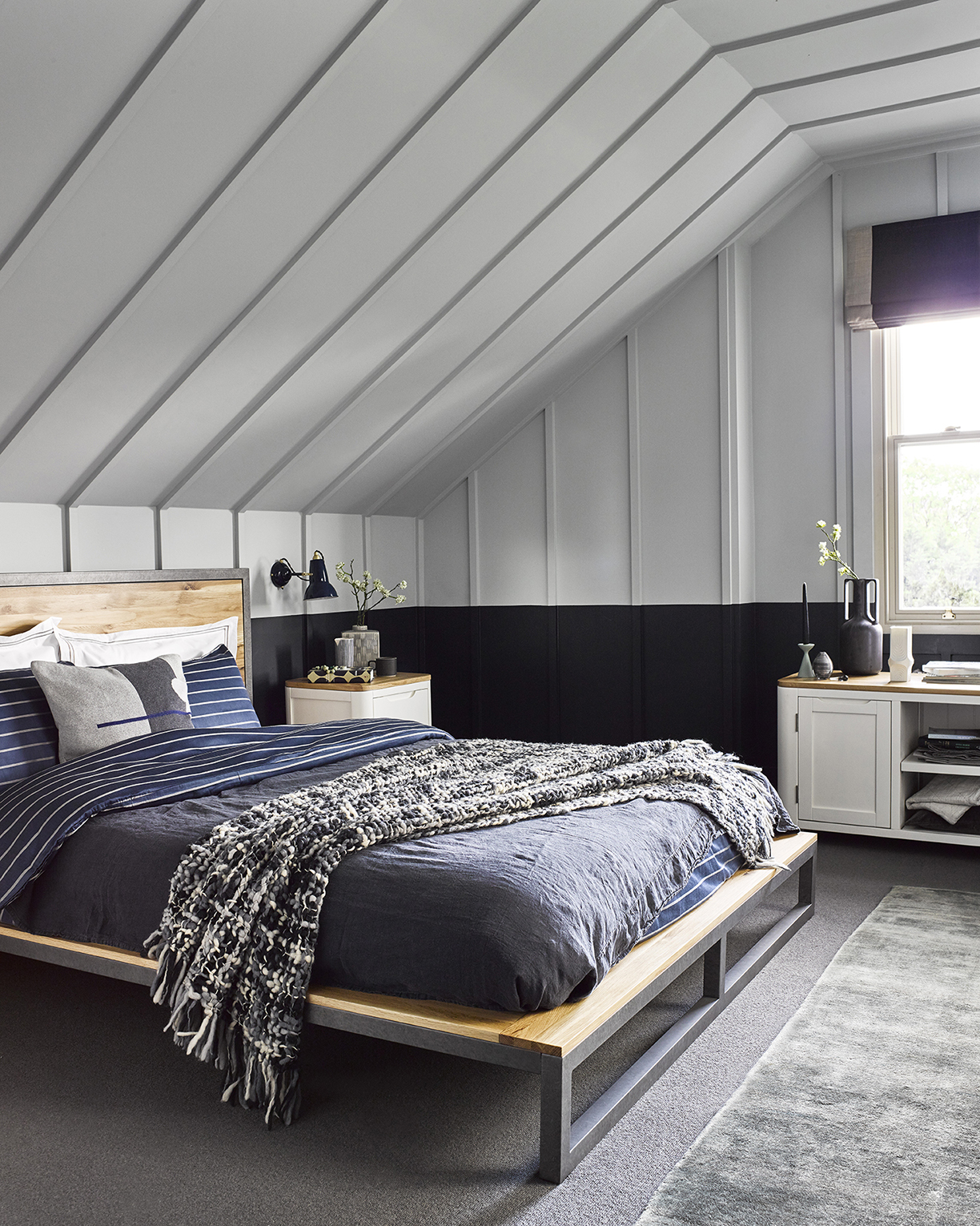
Photo courtesy of Oak Furnitureland
The blank canvas that comes with white walls and ceilings allows for limitless creativity. Create a nautical look for a more relaxed vibe, or add bold colors to make the space stand out. With a white canvas, slanted ceilings can do no harm.
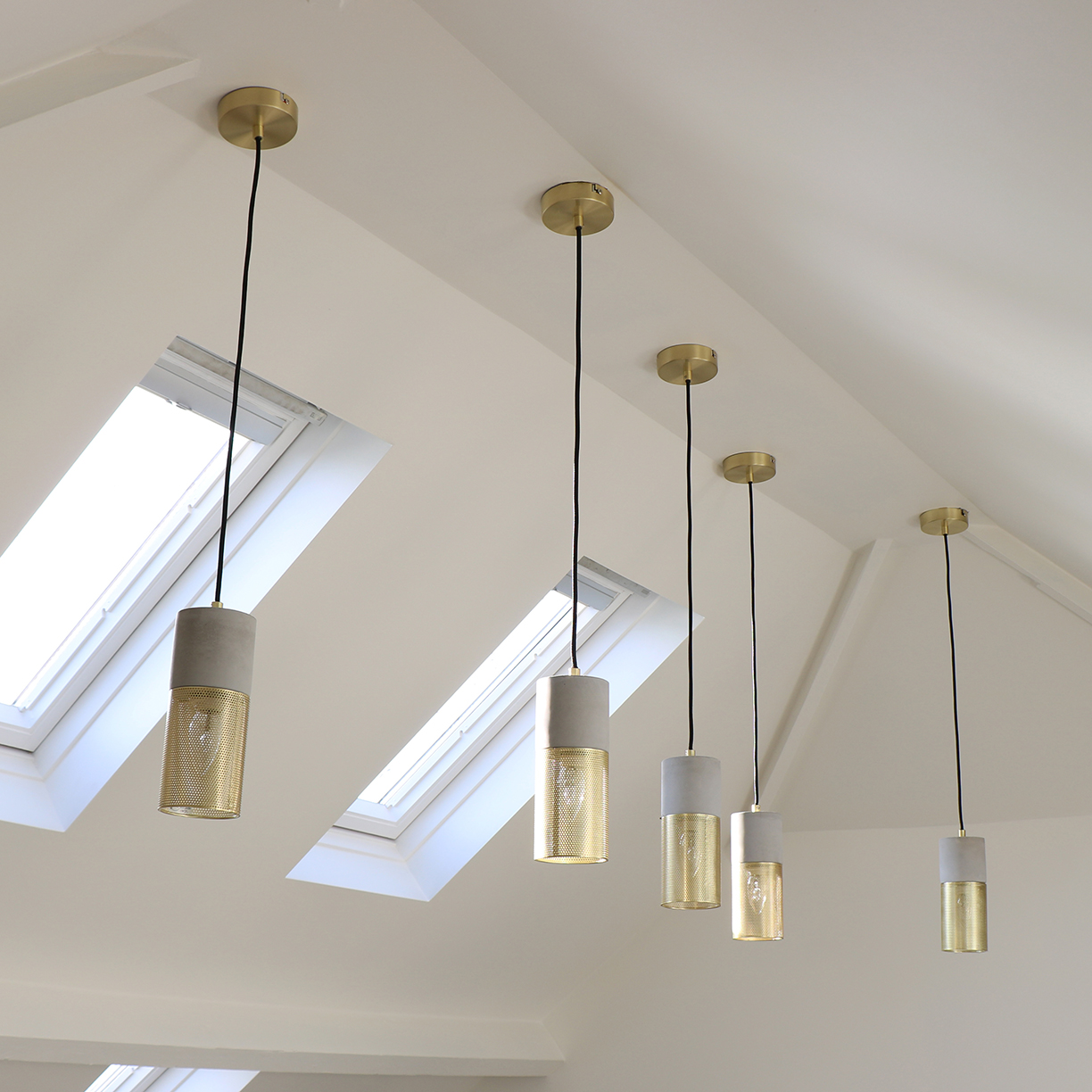
Photo courtesy of Melody Maison
2. Lighting the Room
Lighting a room can be the most difficult challenge when designing a space under slanted ceilings. Many don’t think they can use any overhead lighting, since the ceiling is on a slope. In reality, however, it isn’t impossible — it’s all a matter of picking the right light fixtures.
This is a simple yet elegant style for light fixtures that work perfectly on slanted ceilings. The wires can slightly slightly bend, so that they hang naturally.
Another great way to add natural light under slanted ceilings is with skylights. They flood the room with natural light in the daytime and add a unique and stylish look to the space.
3. A More Natural Look
Sometimes, however, it’s better to let the slanted ceilings add a unique design to the room, rather than hide them with an all-white hue. Adding wooden beams can do just the trick. When the ceilings aren’t too low, wooden beams won’t emphasize the height, but add a beautiful finish to the room instead. Light or dark browns for the wooden beams create a beautiful, natural look that goes with any style.
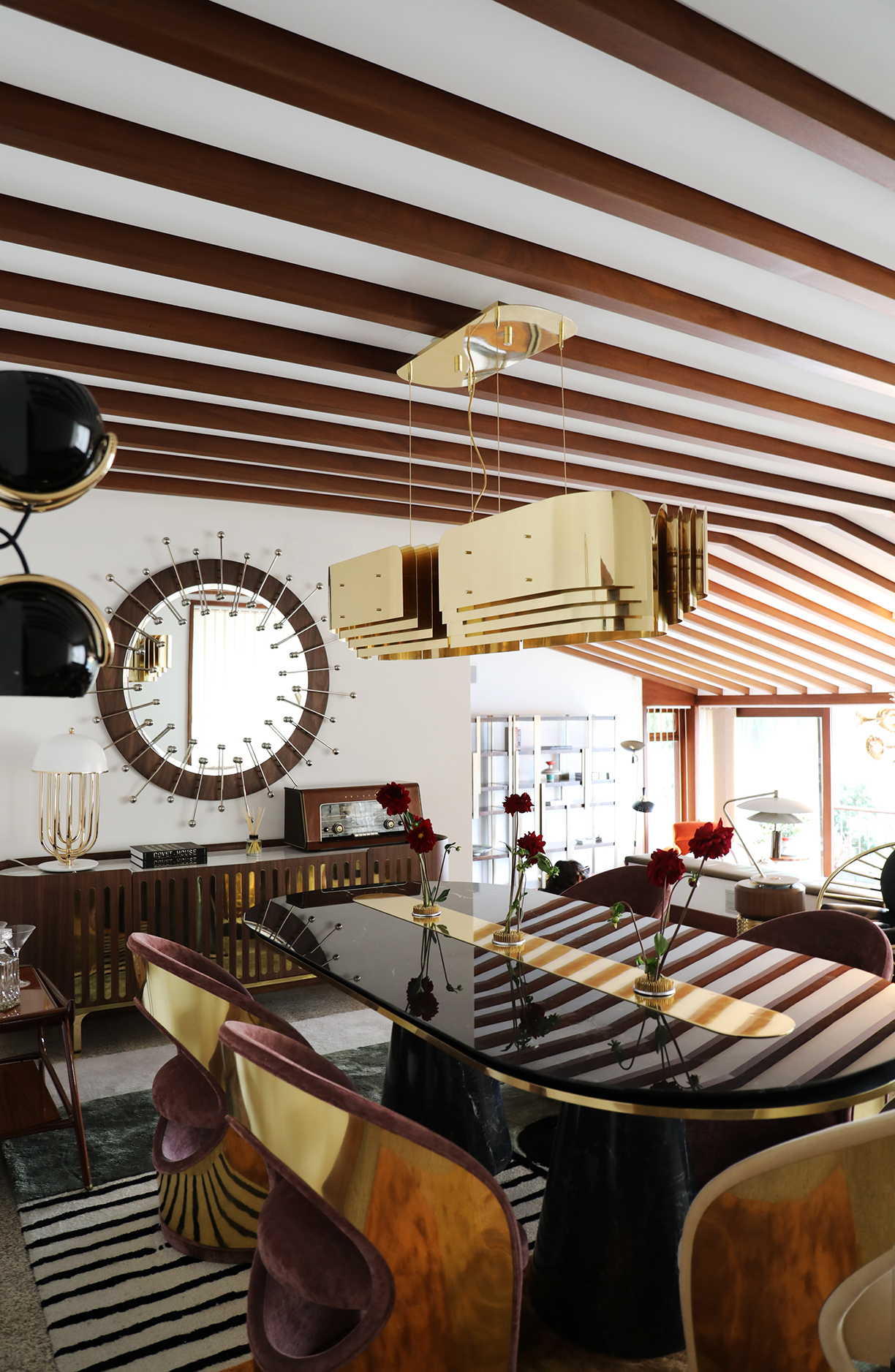
Photo courtesy of Covet Valley
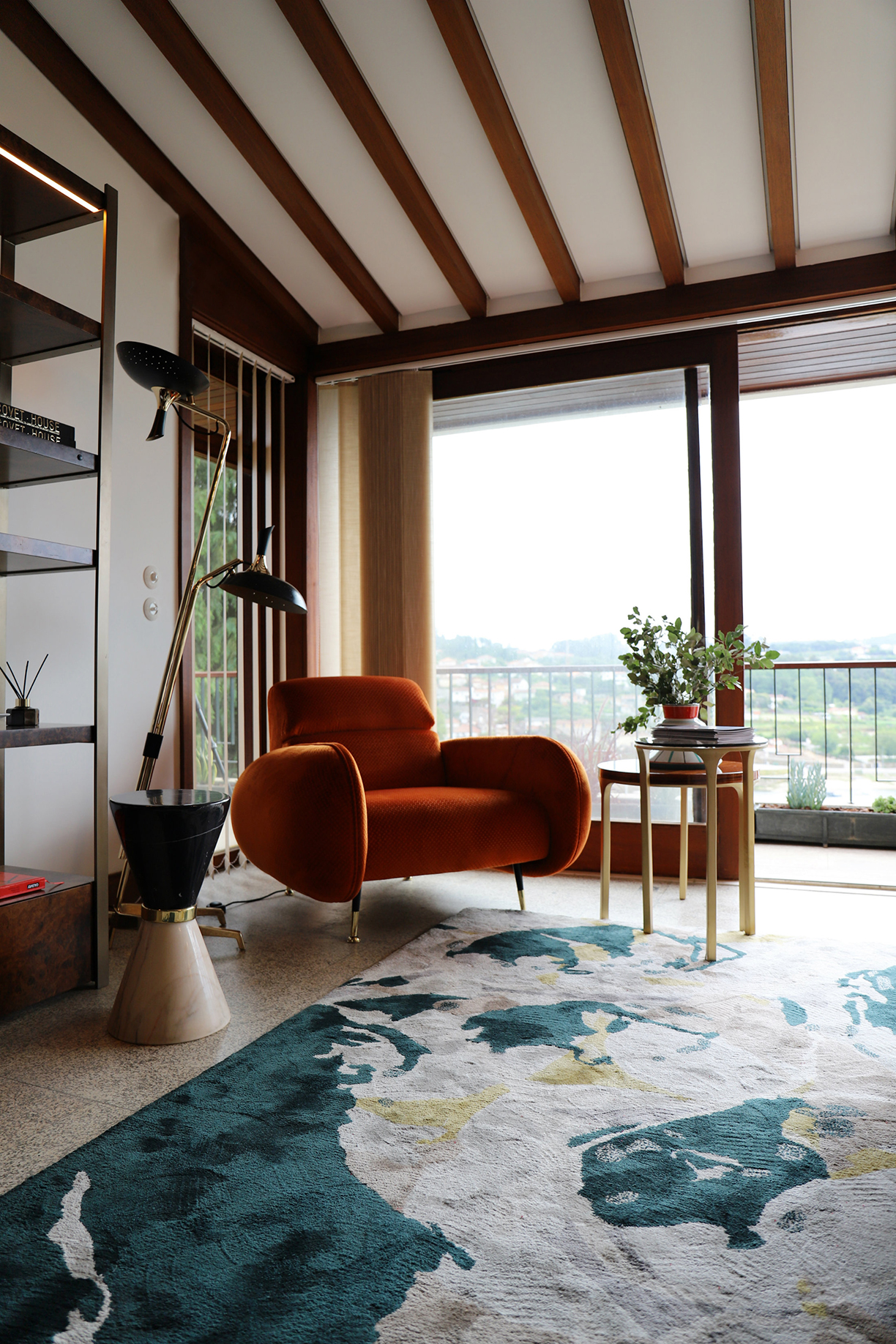
Photo courtesy of Covet Valley
While dark-colored walls can add a depth to a room, it can sometimes be tricky to style around them. Every dark-colored wall brings a heavy tone with it, and it’s important to know how to design the space so has a balanced tone. While it’s a designer’s challenge, here are different rooms that prove it can be done:
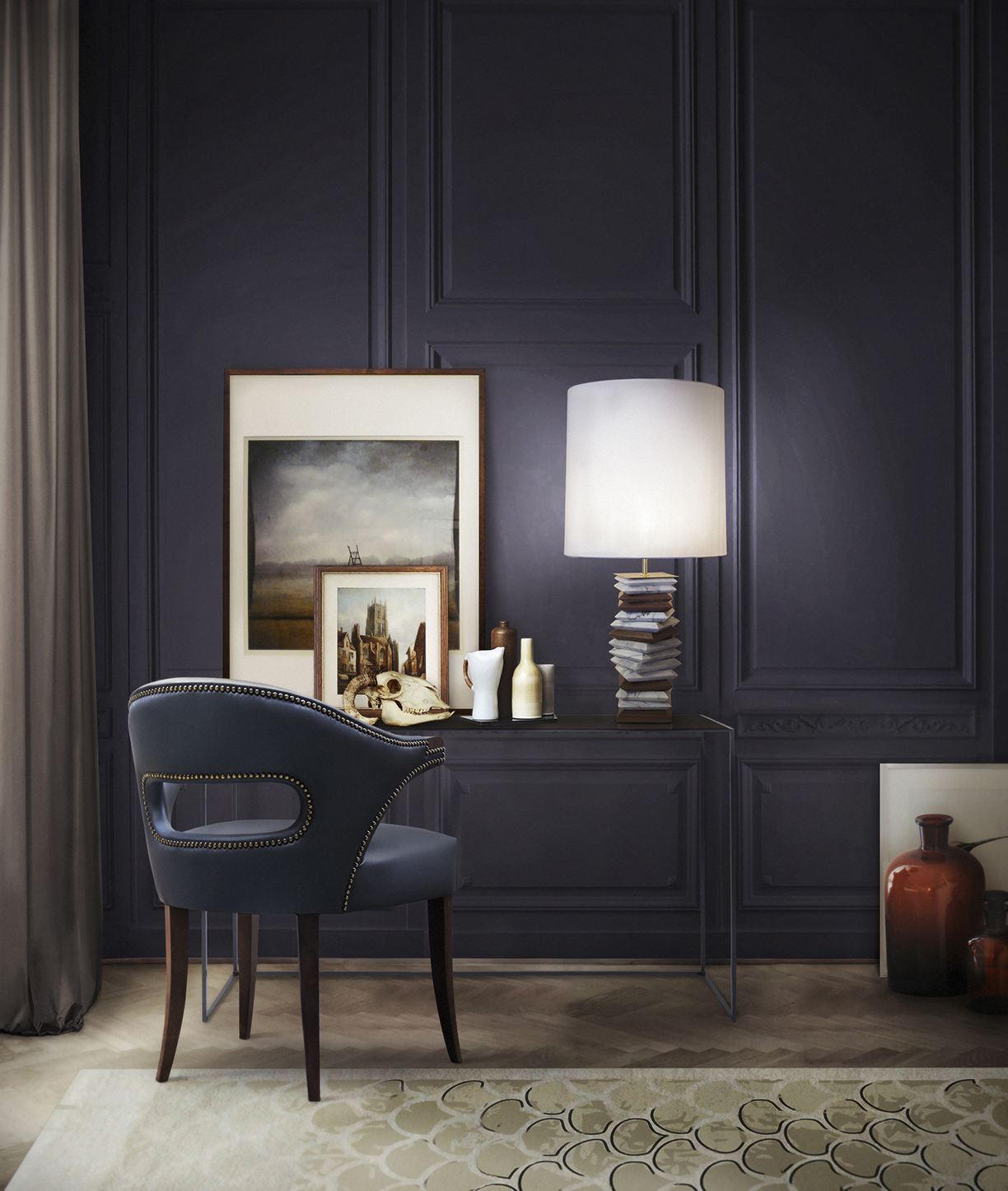
Photo courtesy of Brabbu Design Forces
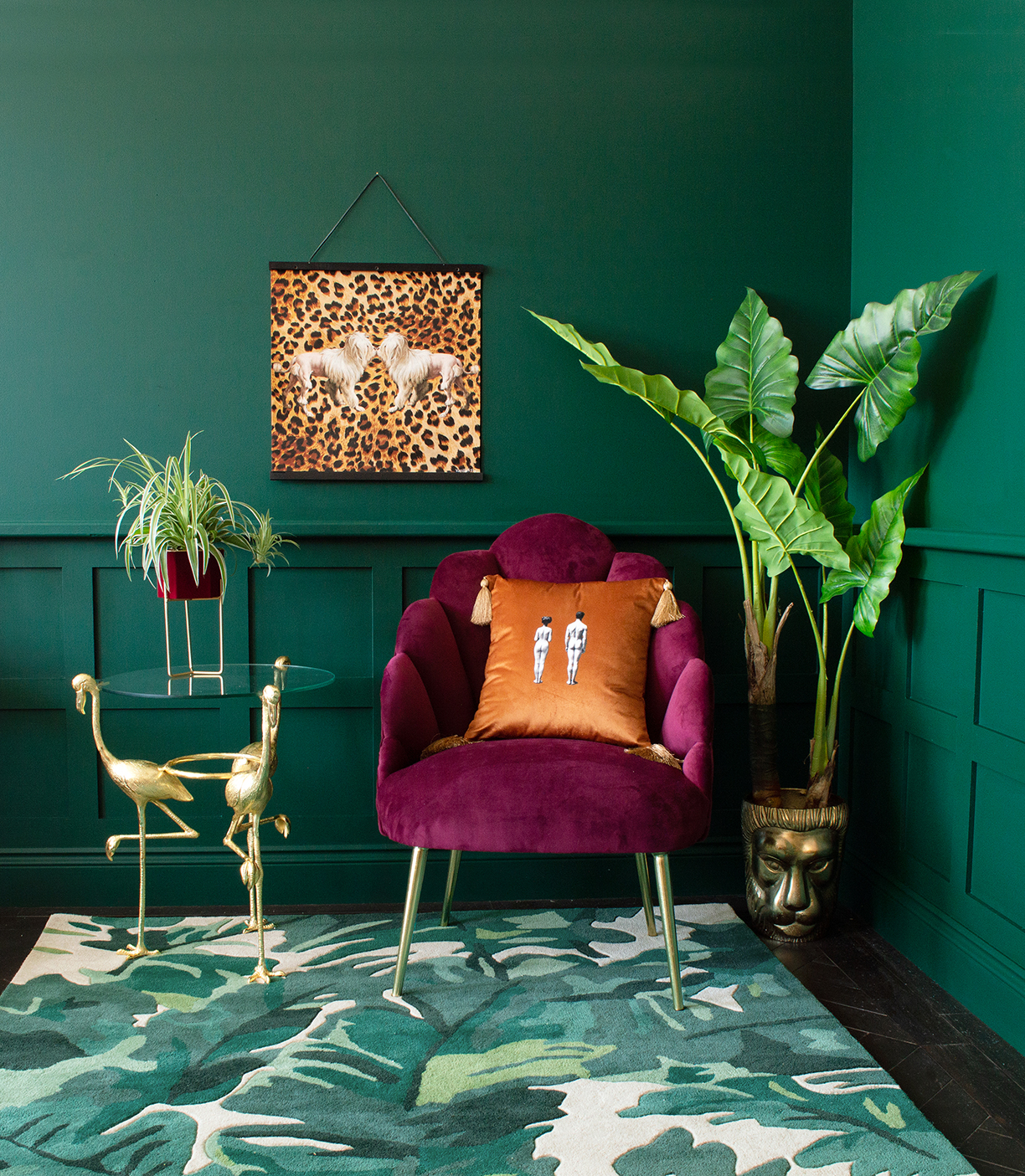
Photo courtesy of AUDENZA
1. Brighter Colors, Warmer Tones
When designing any room, it’s crucial to look at the colors you’ll be using and make sure they balance each other out. This is especially so for rooms with dark-colored walls. While they add a great tone to the space, too many darker tones can make a room feel cold and uninviting.
The perfect balance of colors involves a mixture of both darker and lighter colors, such as this bright red chair in front of a dark green backdrop. The chair adds a pop of color, making the dark colored walls feel warm and inviting.
1. Light versus Dark
Balancing the lighter and darker tones can be a challenge, since having too much of one can overwhelm and wash out the other. These baths represent the perfect balance of tones. The darker walls counteract against the polished bathtubs and light fixtures. This not only adds a great balance, but brings a rich and inviting depth of color to the room.
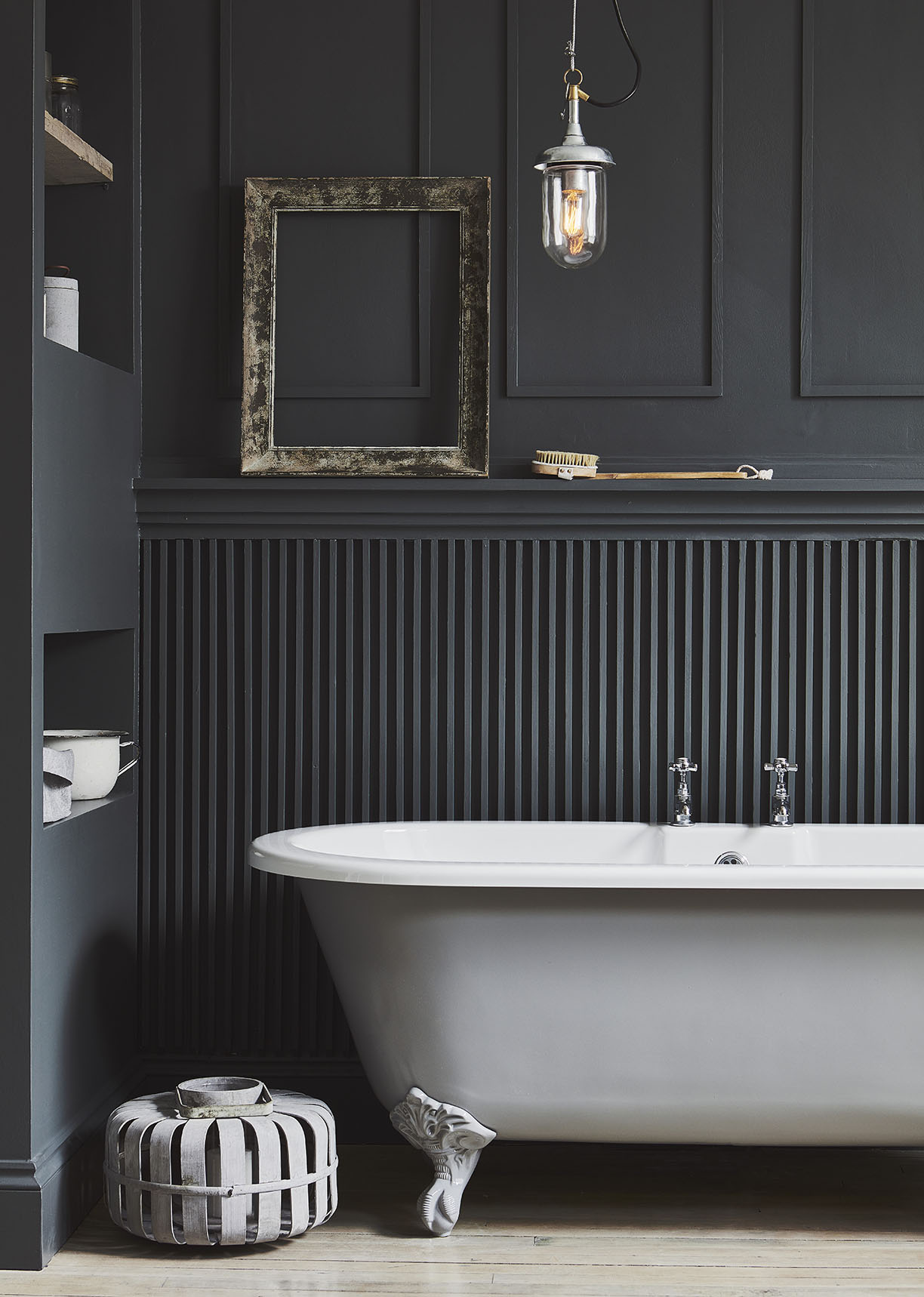
Photo courtesy of Garden Trading
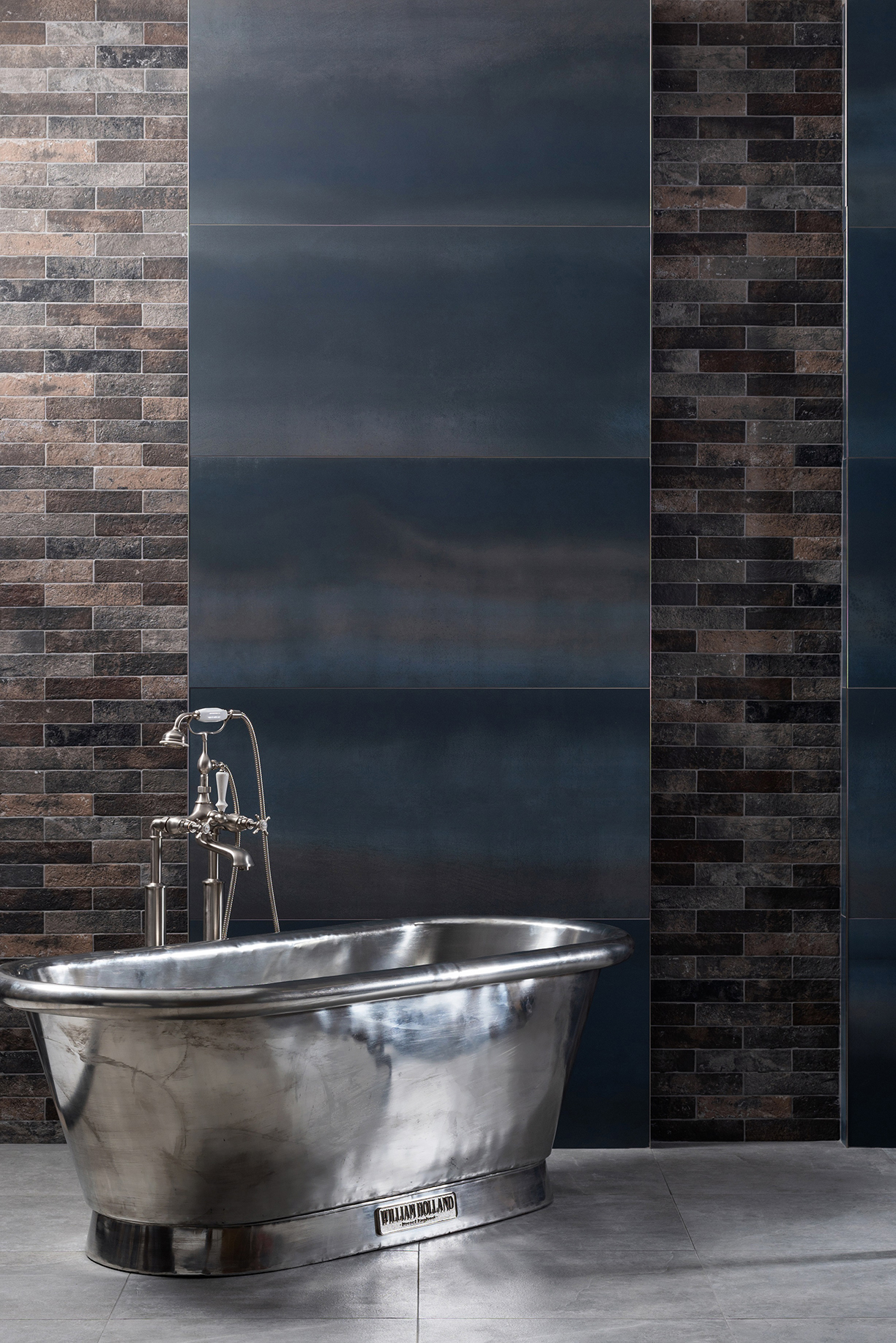
Photo courtesy of Original Style
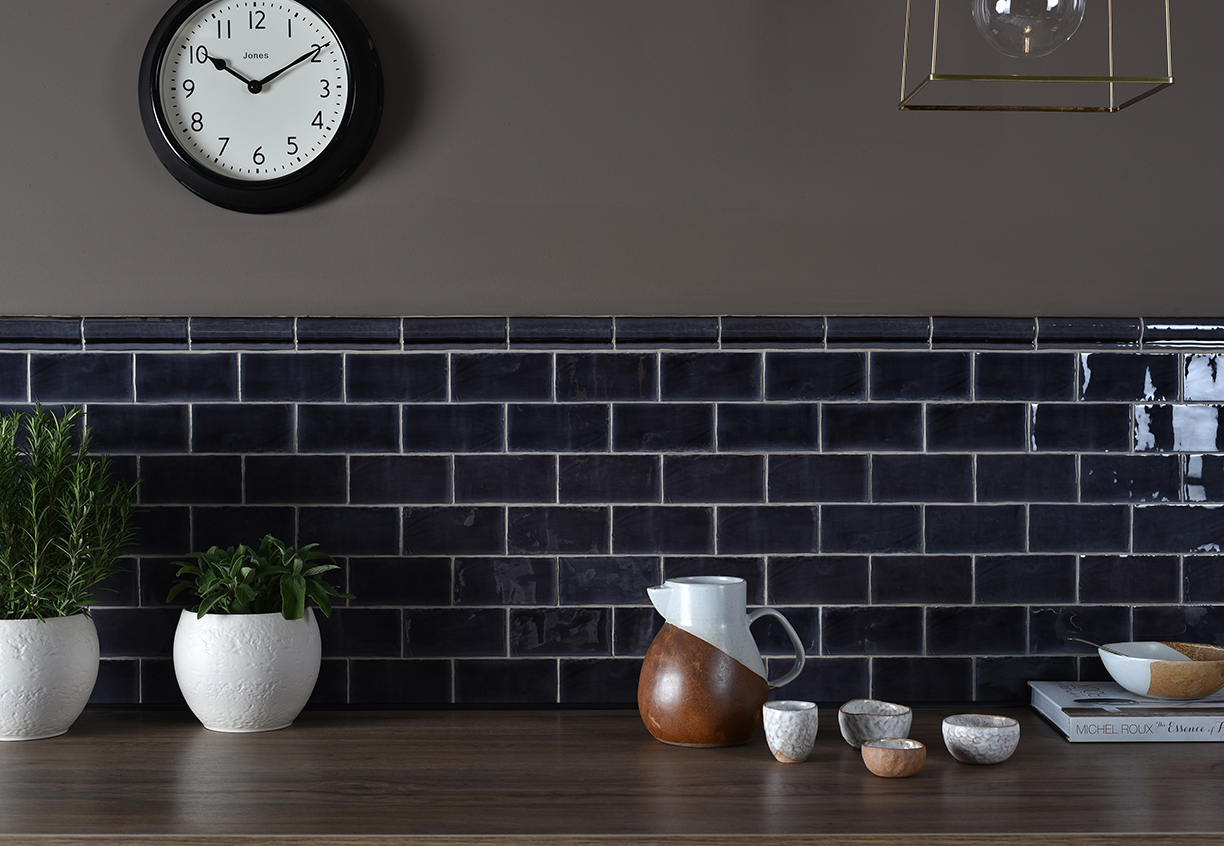
Photo courtesy of Original Style
3. Allowing Tones to Stand Out
When it comes to dark-colored walls, an immediate response may be to counteract the heavier tones with lighter statement pieces. While this can create a beautiful design, it’s important to allow the rich, dark colors to stand out. In this kitchen, there are minimal pieces that are lighter in color, allowing the walls to be full in color and provide a warm and cozy atmosphere.
An often underrated way to style a room with is the flooring, which often ends up as a simple hardwood or tile design. While adding neutral tones to floors can allow other statement pieces in a room to pop, sometimes a bold flooring can be just what the space needs.
With that, here are some tips and tricks to designing a room around a bold floor or rug:
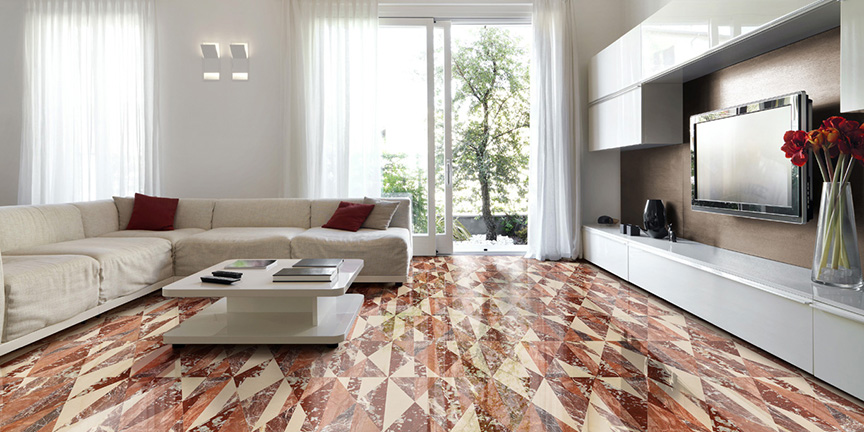
Photo courtesy of Lithos Design

Photo courtesy of Chaplins Furniture
1. Matching Colors
When wanting to design a room with a statement piece, it’s always important to choose the piece that will pop before designing anything else. This way, you’ll know the colors and fabrics involved with the statement piece, and can design around that. In terms of flooring, a bold rug can make or break a room. Choosing the bold rug before anything else can ensure whatever you choose for the rest of the room will complement it.
With this space, the bold rug has two main colors, with gold being its secondary color. Instead of choosing another blue for the chairs, the designer chose to use the rug’s secondary color. This way, the blue rug still adds a pop, rather than being one of pieces with a similar color in the room. By using one of the more minor colors on the floor, there is still a wide variety of hues to have a creative and comfortable style.
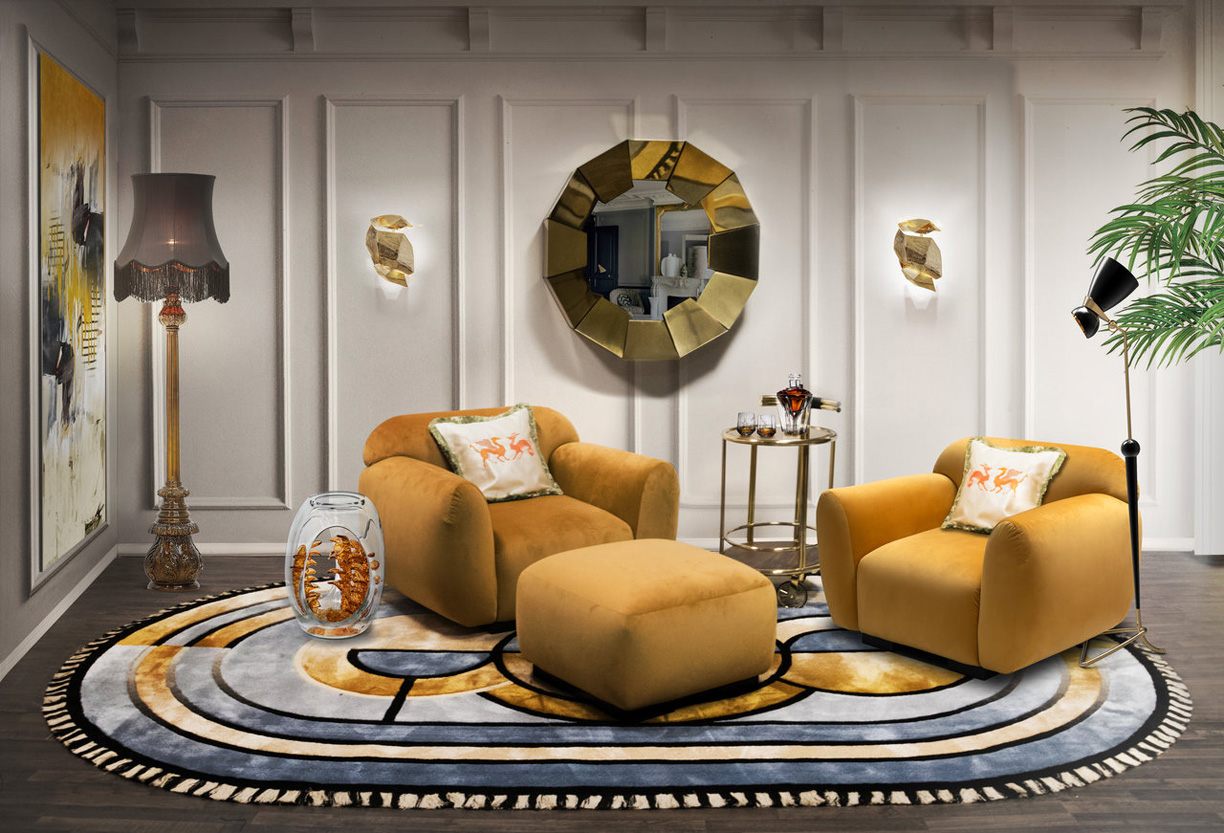
Photo courtesy of RugSociety
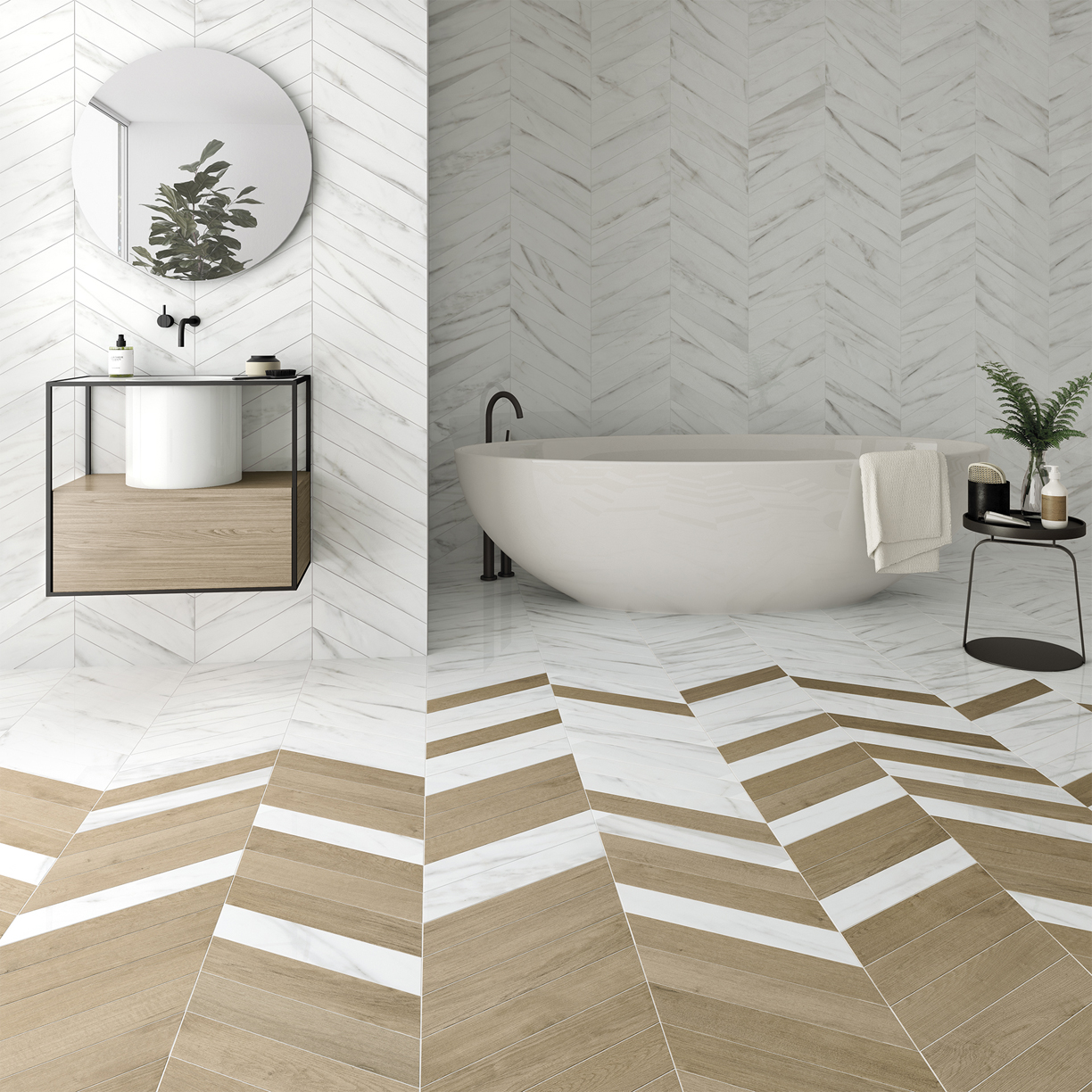
Photo courtesy of WOW Design
2. Sleek and Airy
By allowing the bold floor pattern to be the centerpiece of the room, the designer creates a light and airy atmosphere. Instead of cluttering the room with more designs and colors, the simple designs allow for the bold floor to stand out. The minimalist look along with various plants adds a sleek and refined style to the room while also adding just enough color to keep it vibrant.
The chevron floor interlocking tile and hardwood floors adds a one-of-a-kind design for the individual to enjoy. With the only other colors in the room being a hint of black and green, the minimalist design keeps the style interesting while also comforting in its simplicity. Keep this design in mind if you’re looking for a minimalist style with an added statement piece.
3. Eclectic Style
Don’t be afraid of flooring that gets colorful and different. When styled correctly, this can be the selling-point of the home. Its uniqueness never fails to impress those who are looking for something different yet clean and airy.
While this tile may look busy and complicated close up, take a step back and see the beauty it adds to the home. The mid-century modern design adds a flair unlike any other, while also staying sleek and refined.
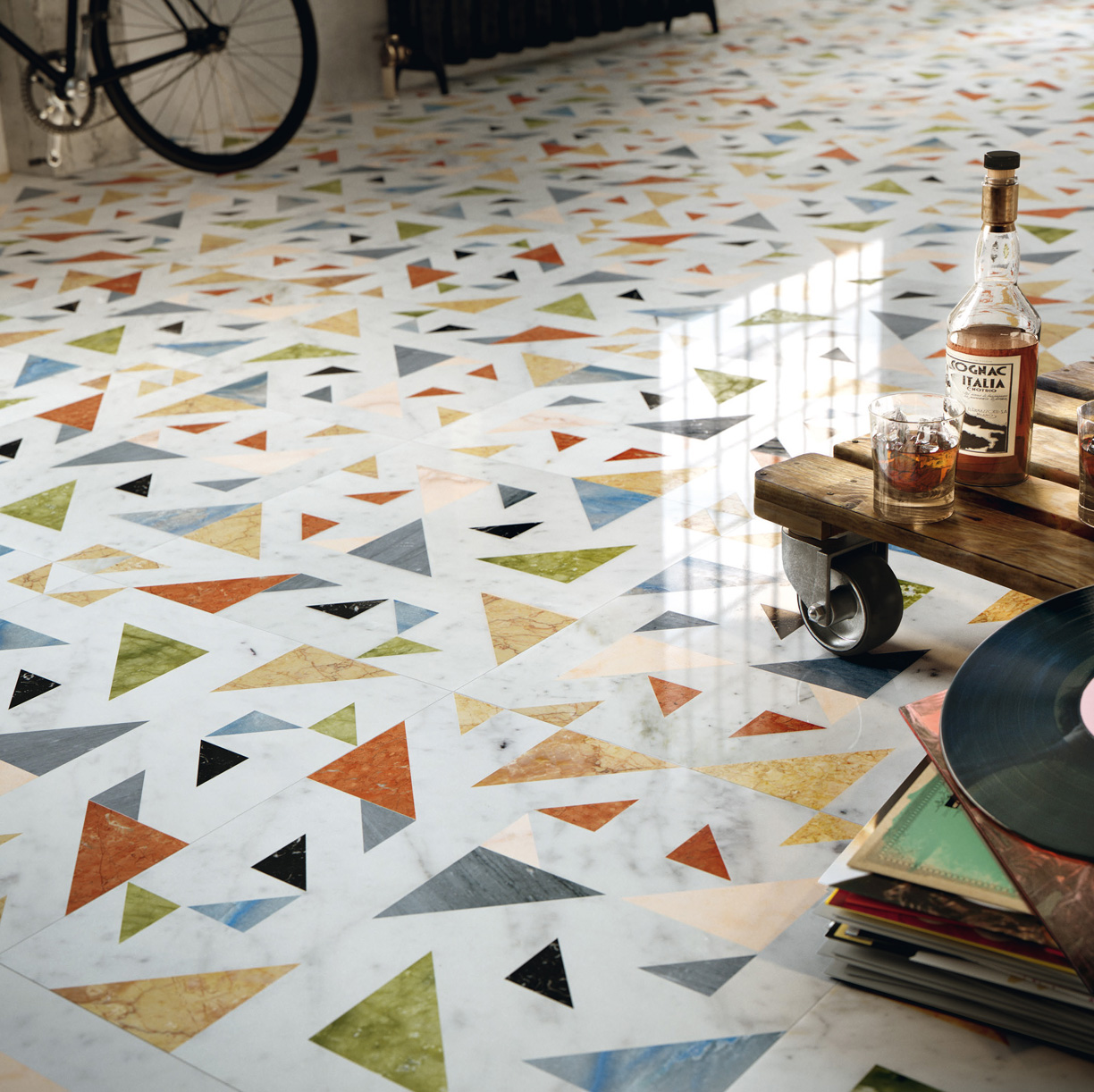
Photo courtesy of Lithos Design
Wellness may be a hot topic, but not everyone is sure what it means.
Every year one topic seems to dominate real estate. This year it’s wellness. Yet, if you ask designers and architects what comprises wellness in he home you are apt to get a variety of responses ranging from connections to nature to spaces for meditation or yoga to air quality. Some might point to certifications such as Wellness Within Your Walls or the WELL Building Standard or biophilic design. Others say LEED and other green certifications address wellness.
“I think health and wellness is still in the ‘public education’ stage of what it means. All last year you’re hearing it more and more and more. But I still think it’s educating the designer,” and the public, says Beverly Hills designer Christopher Grubb, president of Arch-Interiors Design Group. Designers often understand the term as it applies to LEED accreditation or to aging in place, but not necessarily the overall concept.
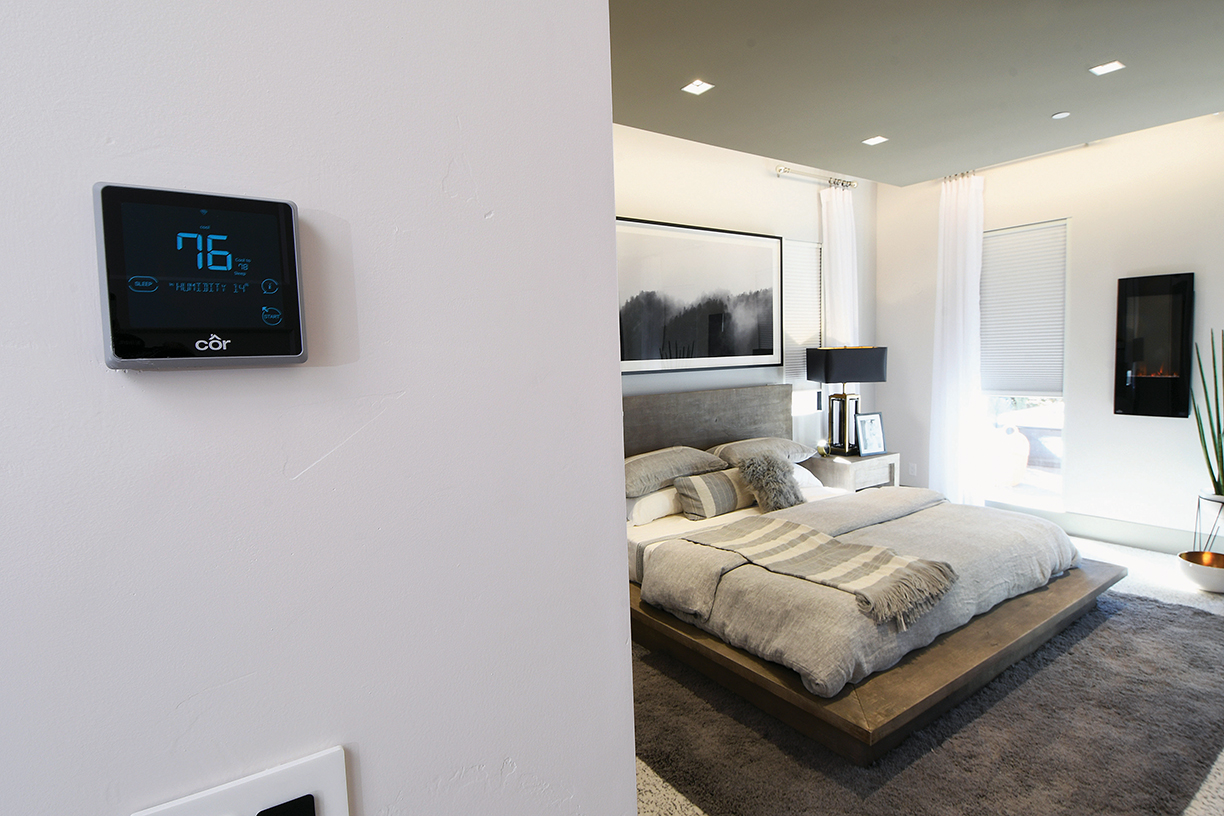
“It might mean one thing to one person and something else to another,” says designer Allie Mann with Case Architects and Remodelers in Washington, D.C., noting that some might be caught up in the movement without fully understanding it.
“I think that this is really being driven by a lot of consumer behavior. When it comes to the builder-developer world, I think our consumers are much more educated. I think they know what they want. They just don’t know how to get there,” says Angela Harris, creative director and principal of TRIO, an award-winning, market-driven, full-service interior design firm in Denver.
“Health and wellness is a new frontier for all of us, says Jacob Atalla, vice president of sustainability for KB Home. KB Home, along with Hanley Wood, KTGY Architects and Delos, a tech and wellness company, created a concept home outside of Las Vegas in Henderson, Nevada, to illustrate what a home designed with wellness as a core value looks like and how it functions. “It is the home story of the future,” he says.
Even though wellness seems to have suddenly burst onto the housing scene in the last year, the idea of connecting home to health is not new. More than 20 years ago, health issues potentially linked to building materials and toxic conditions such as black mold gained attention, giving rise to the term sick building syndrome. Since then, awareness of the relationship between the built environment and health has been growing. A decade ago, new technologies led to the development of products that either reduced the level of toxic contaminants released into the indoor ecosystem or scrubbed the air of VOCs (volatile organic compounds). Other concerns about noise, water and connections with the natural environment were also beginning to surface. At the same time, health and wellness was becoming an important value for consumers worldwide, expanding beyond fitness to include personalized medicine, mind-body connections, spa, wellness tourism and also the built environment.
By 2015, wellness had morphed into a $3.7 trillion industry worldwide, according to the Global Wellness Institute, and climbed an additional 6.4 percent annually to reach $4.2 trillion in 2017. One of the fastest growing sectors in the wellness space is a category called Wellness Lifestyle Real Estate, which includes everything in the built environment that incorporates wellness elements in design, construction, amenities and service. In addition to physical well-being, wellness real estate also addresses social wellness and mental, emotional and spiritual wellness.
The biggest difference between homes designed to promote wellness and homes that address air quality or other environmental factors that impact physical health is that wellness is integral to the design and permeates every aspect of the home from floor plan to amenities. “Overall you are programming the home to be more livable,” says Harris.
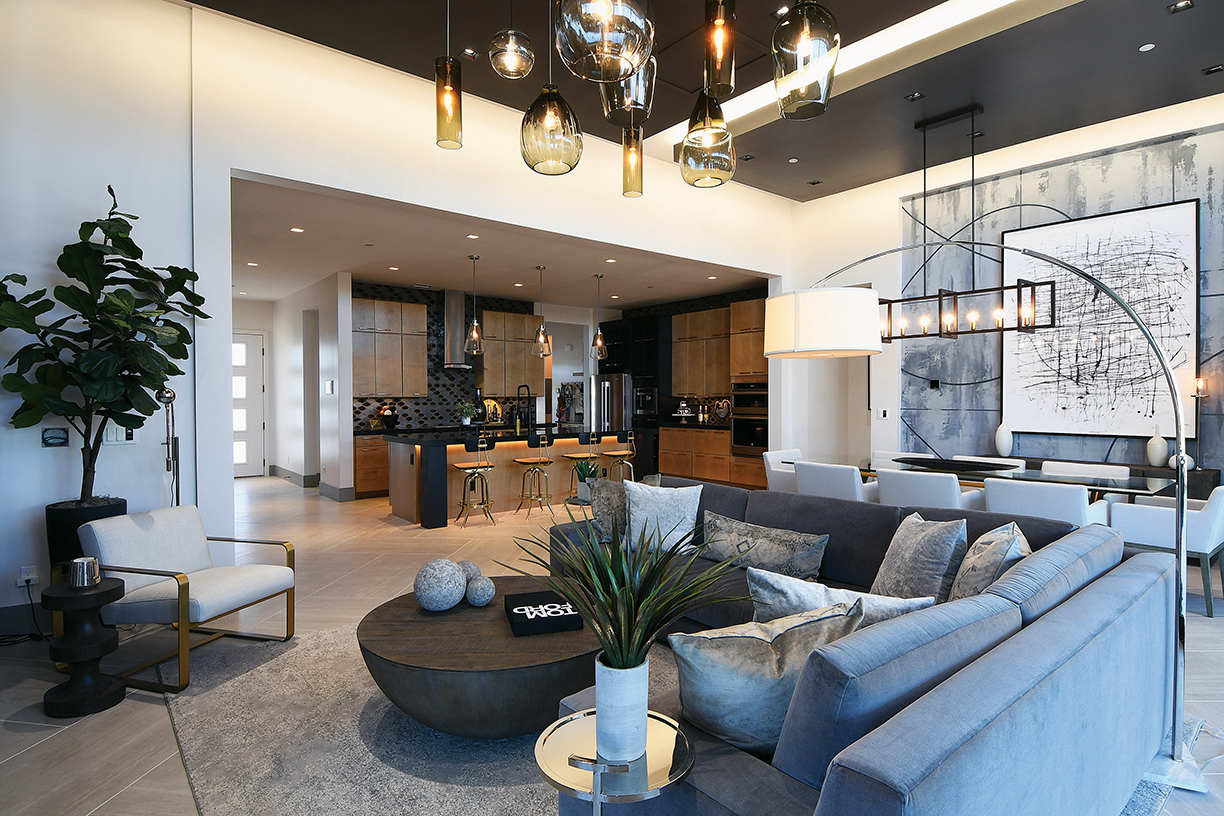
Frustrated by the lack of attention to the ways in which indoor environments influence health, Phil Scalia, a former partner at Goldman Sachs, founded the initiative that eventually became Delos, which has been on the forefront of wellness in the built environment for more than 10 years. In 2014, Delos established the WELL Building Standard, which was initially applied to commercial buildings. Over 1,200 projects in 45 countries, across over 250 million square feet of commercial real estate, fall under the WELL umbrella. The WELL standard focuses on seven categories of building performance: air, water, nourishment, light, fitness, comfort and mind. Additionally, it takes connections between a building and the surroundings into consideration.
During groundbreaking work on EcoManor, the first LEED Gold certified single-family residence in the U.S., designer Jillian Pritchard Cooke discovered that both consumers and design and construction professionals lacked accurate information on how to reduce toxins in the interior environment. That was the inspiration for Wellness Within Your Walls, another wellness certification that offers education on building and designing healthier interior environments. The focus is on materials both for construction and also furnishings and finishes.
Another more recent wellness initiative centers around the principles of biophilic design and the benefits of bringing natural elements into buildings. In 2016, Amanda Sturgeon, a biophilic design expert and CEO of the International Living Future Institute spearheaded the Biophilic Design Initiative. In addition to designers, builders and architects, current proponents include tech companies who have added natural elements to buildings to increase productivity and reduce stress for workers.
This year, it’s fair to say wellness is coming home as attention shifts from commercial to residential applications. The KB ProjeKt Home takes wellness in residential structures to the next level. Not only are established practices regarding connections with the outdoors, indoor toxins and air quality embedded in the design, but a synergy with smart home tech transforms wellness from a passive attribute into one that is active.
“The motivation was to examine how we can make the home healthier and at the same time how do we engage that home in partnering with the occupants, with the people living in it, to enhance their health and wellness or engage them in making the environment they live in better. We know that about 90 percent of our lives are spent indoors, and a lot of that indoor living is in your own home,” Atalla explains. Recent research from Hanley Wood shows that homeowners believe housing is essential or extremely important to good health, and two-thirds say the right housing environment could cut annual medical costs by 40 percent.
Central to the home’s wellness quotient is an innovative smart system, dubbed DARWIN, developed by Delos. This first of its kind, home wellness intelligence network constantly monitors the home environment and interacts with and adjusts systems in the home as needed. A network of sensors built into the walls — there are nine in the ProjeKt Home — constantly tests air quality.
If it detects problems with air quality, containments or chemicals from everyday products, DARWIN directs the climate control systems to bring more fresh air to that room. Water quality is also monitored, and purified water is delivered to every fixture in the home. “You have a wellness intelligence system that is constantly doing things on your behalf to increase your wellbeing,” says Atalla.
The system also monitors the plumbing system and alerts homeowners to leaks. Sleep is an important wellness component and the master bedroom in this home is primed to promote slumber. Special noise-damping drywall ensures quiet. Motorized shades block out exterior light. “Total quietness, total darkness, and circadian rhythms help you sleep,” adds Atalla.
Lighting is another mainstay of wellness formulas, both natural light from large windows and expanses of glass as well as interior lighting keyed to circadian rhythms. DARWIN adjusts lights to match the time of day. But what makes this function more worthwhile is the homeowner can change the lighting to produce a desired effect, which means the lights can create an energizing morning environment even if morning comes at 5 a.m. on a stormy day.

A living garden wall enables the home to grow herbs and microgreens. Turning the home and kitchen into a place to produce healthy food is an emerging area of innovation for kitchens.
Social interaction is another wellness component, and community design increasingly takes social interaction into account with spaces such as walking trails, parks and coffee houses designed to encourage interaction and encounters among residents as part of everyday life.
It might seem like a big jump to add wellness to typical new homes, particularly production homes, but Atalla says the KB ProjeKt Home is an example of what can be done. Additionally, Harris says it’s often an easy tweak to add features such as water filtration in the kitchen and master bath. “That doesn’t cost a whole lot. And again, I think it’s just about livability and how you’re programming your floor plan to be more livable.”
Looking ahead, most research points to continued growth of the wellness economy, with new initiatives approaching wellness from the perspective of design, construction, materials and function. There are now more than 740 wellness real estate and community developments built or in development across 34 countries — a number that grows weekly according to the Global Wellness Institute.
Right now, the $134 billion wellness real estate market is about half the size of the global green building industry and projections call for the pace to continue. “But the wellness market isn’t just growing, it’s extremely dynamic. We believe that the three sectors that represent the core spheres of life will see the strongest future growth — wellness real estate, workplace wellness and wellness tourism — while other sectors will also grow as they support the integration of wellness into all aspects of daily life,” says Ophelia Yeung, senior research fellow, GWI.
When it comes to maximalist design, more is definitely more, and walls are no exception. We’re not going back to the retro chintz of bygone eras, instead, current wallpaper patterns are bold, edgy, fun and available in huge variety.
Oversized tropical leaves, prancing golden zebras, floral prints in a neon palette, animal prints, geometric shapes… even world maps designed to fit whole walls.
They’re becoming huge works of art within a room with many wallpaper designs taking inspiration from famous artists — Van Gogh, Matisse, Andy Warhol to name a few. Wallpaper designs are refusing to fade into the background.
So how are home designers putting the trend into practice? Bold wallpaper creates a huge impact so it tends to be the starting point for a room design. One or two statement walls is often enough. They’re striking without being overpowering.
Dark colors, big patterns, embracing the bold wallpaper trend requires bravery, but the courageous are able to create unique rooms full of life and edgy charm.

wallsauce.com
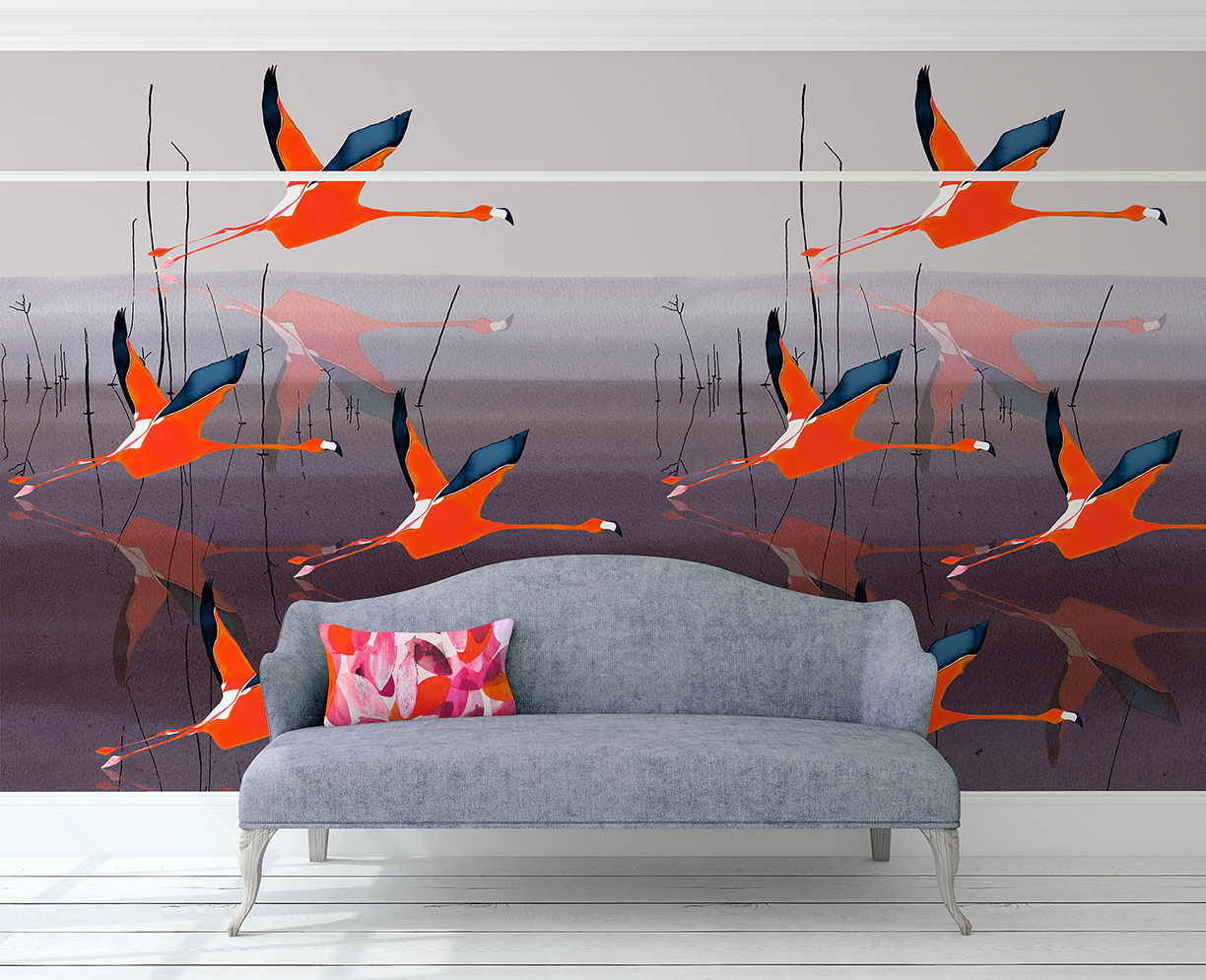
This striking mural wallpaper, designed by Anna Jacobs from her original painting in ink on watercolour paper, is imagined as a super large scale art work to give maximum impact in an interior. It can also be hung in repeat, used with picture rails and dado rails and cropped to fit most wall heights, without compromising the image.
Photo courtesy of Anna Jacobs
This grand Jungle Paradise Wallpaper by Santorus features ascending vines of imperial creatures amongst ferns and palms. A soft gold-metallic finish enhances the stunning imagery to set a scene of embellished colonial nostalgia.
Photo courtesy of Lime Lace
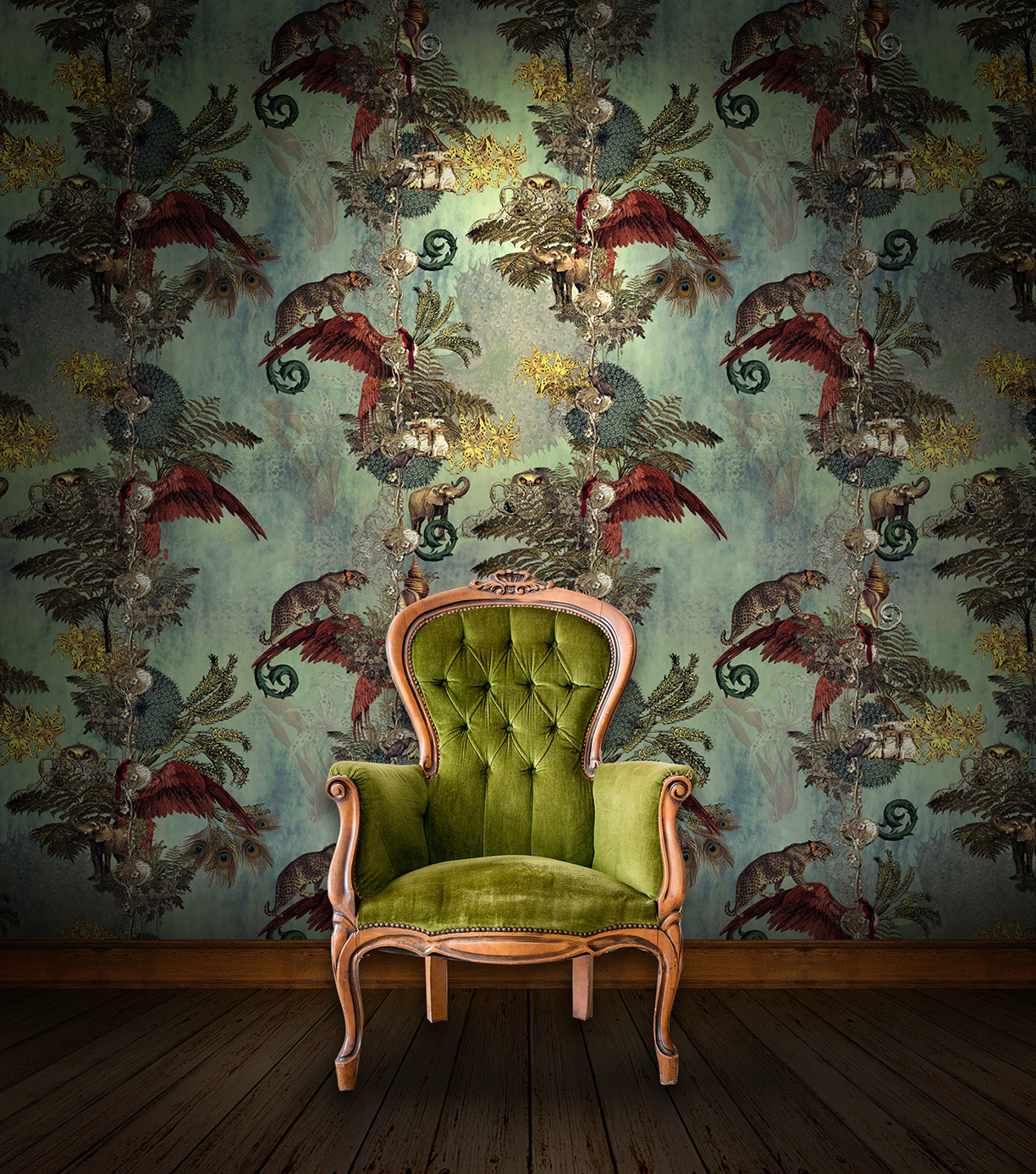
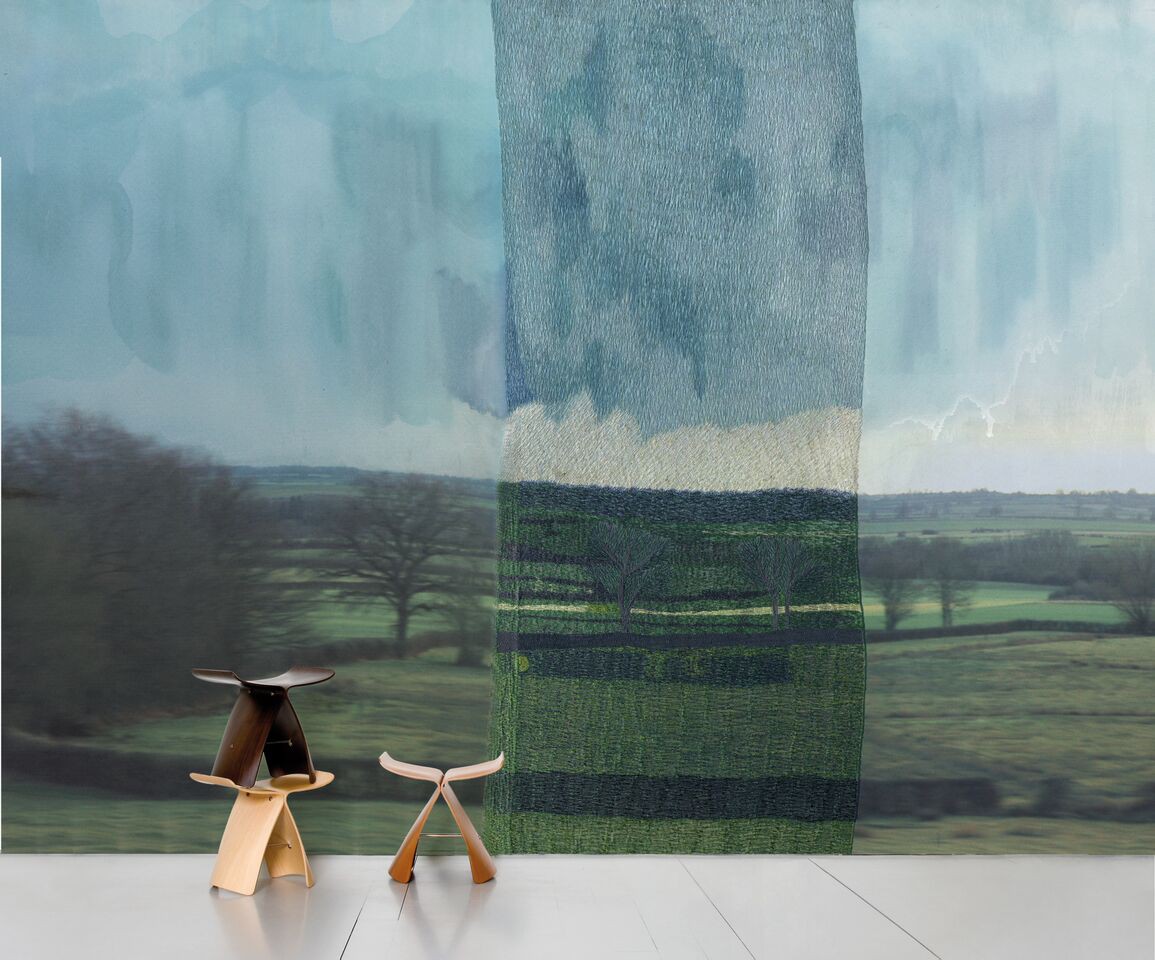
Designed by Aurélie Mathigot, this blue and green wallpaper displays a soothing design. The wallpaper is entitled “De L’autre Cote le Calme,” which translates to “The Other Side of Calm.” If you’re in search of escape, wide open spaces, and extensive greenery, this beautiful wallpaper will bring this breath of fresh air.
Photo courtesy of KSL LIVING
This paper creates a tromp l’oeil effect — appearing as three-dimensional images but on a flat surface. The designer sourced the images of old wood from surfaces in his own workshop in Eindhoven. This is a part of a new collection of six designs by Piet Hein Eek, black marble, white marble, black brick wall, silver brick wall, burnt wood and blue painted wooden floorboards.
Photo courtesy of Lagoon
